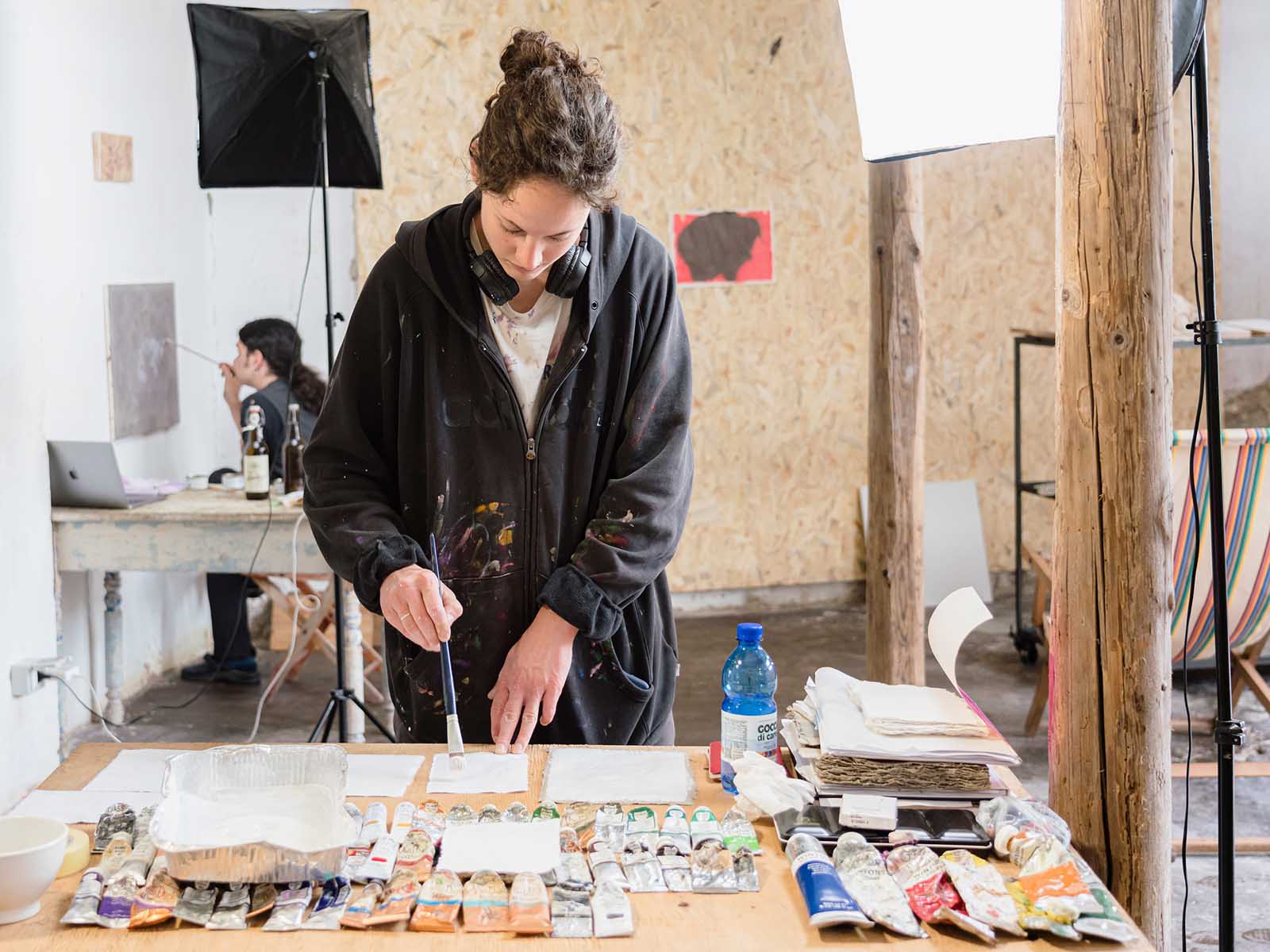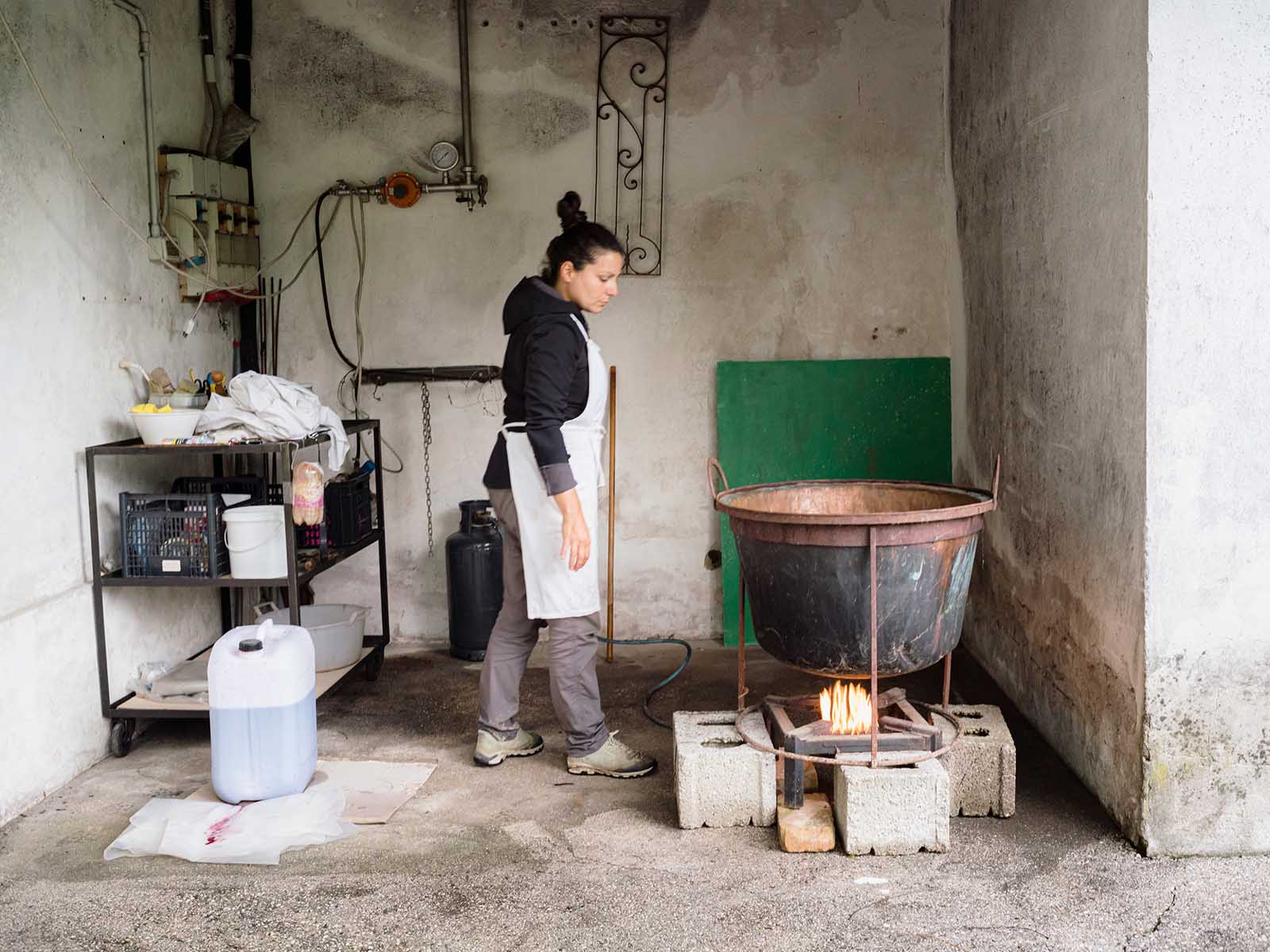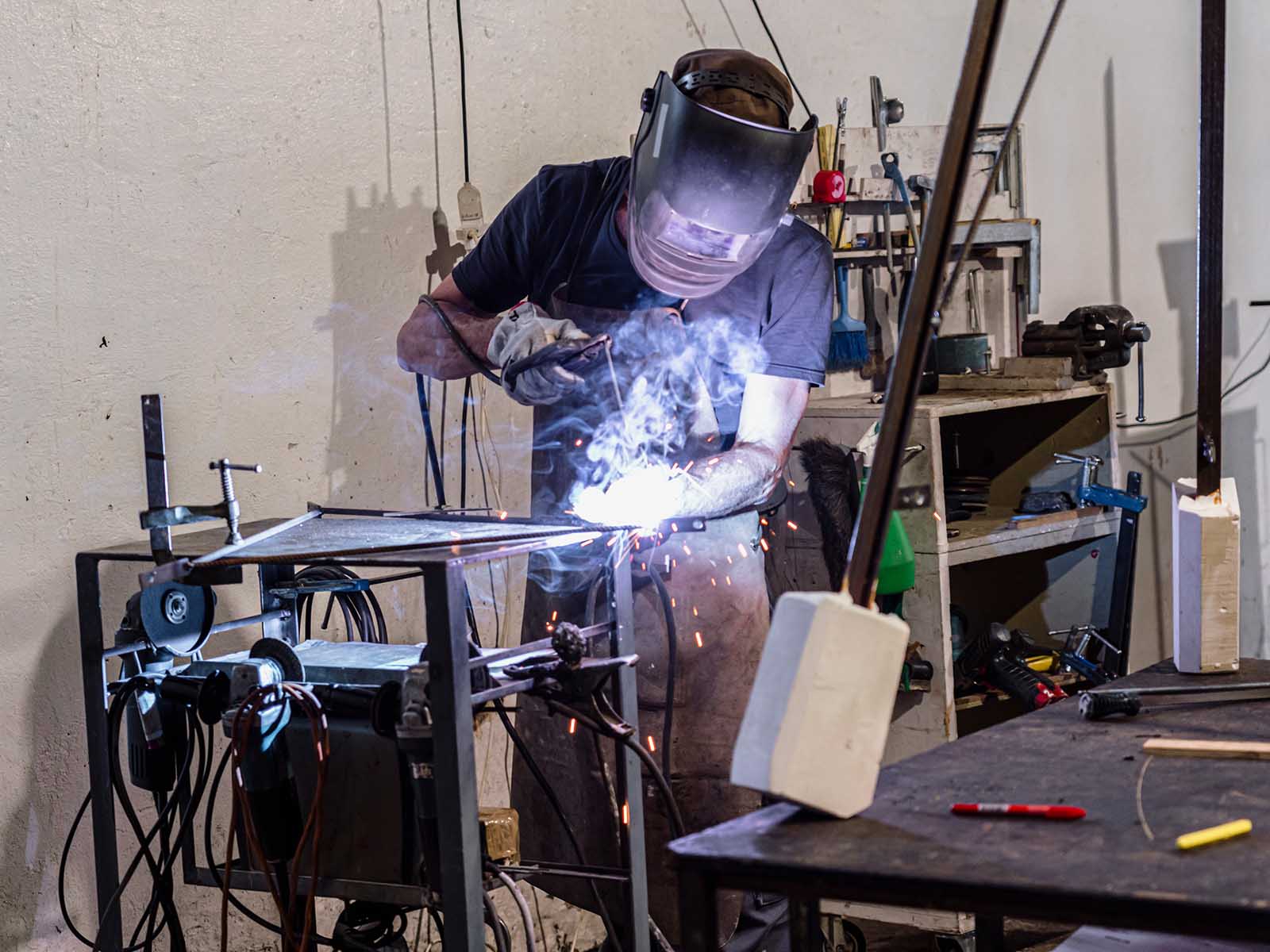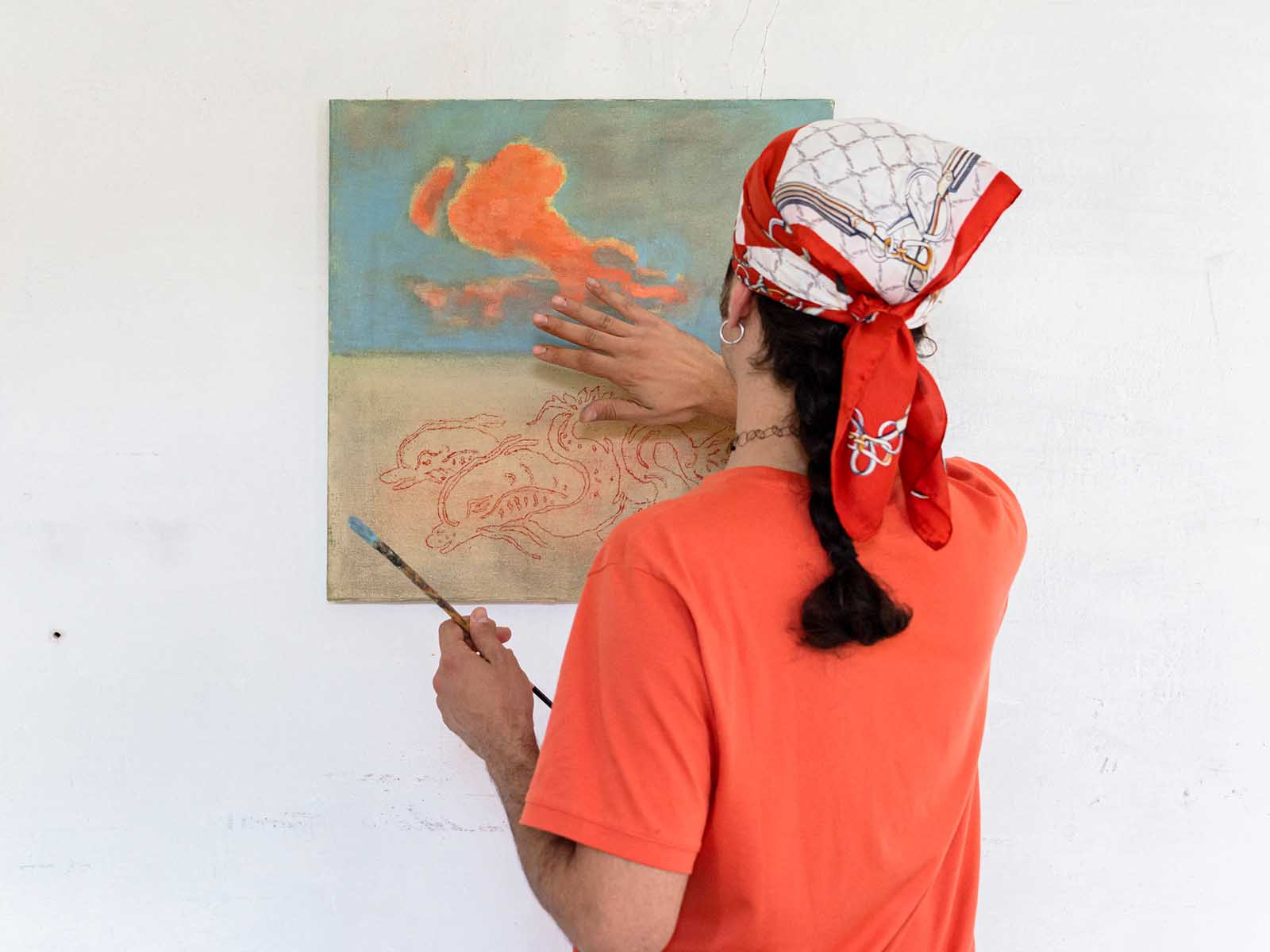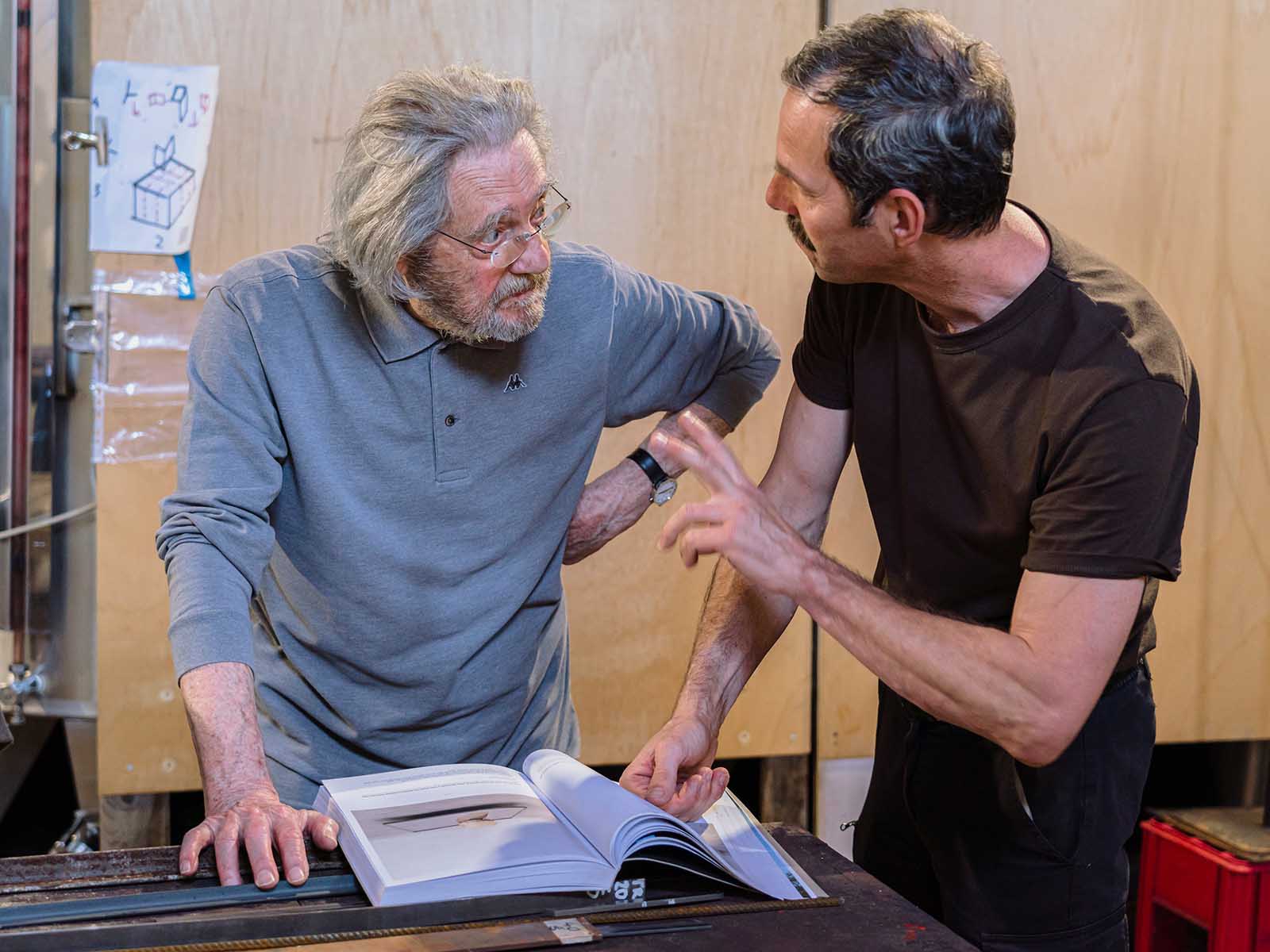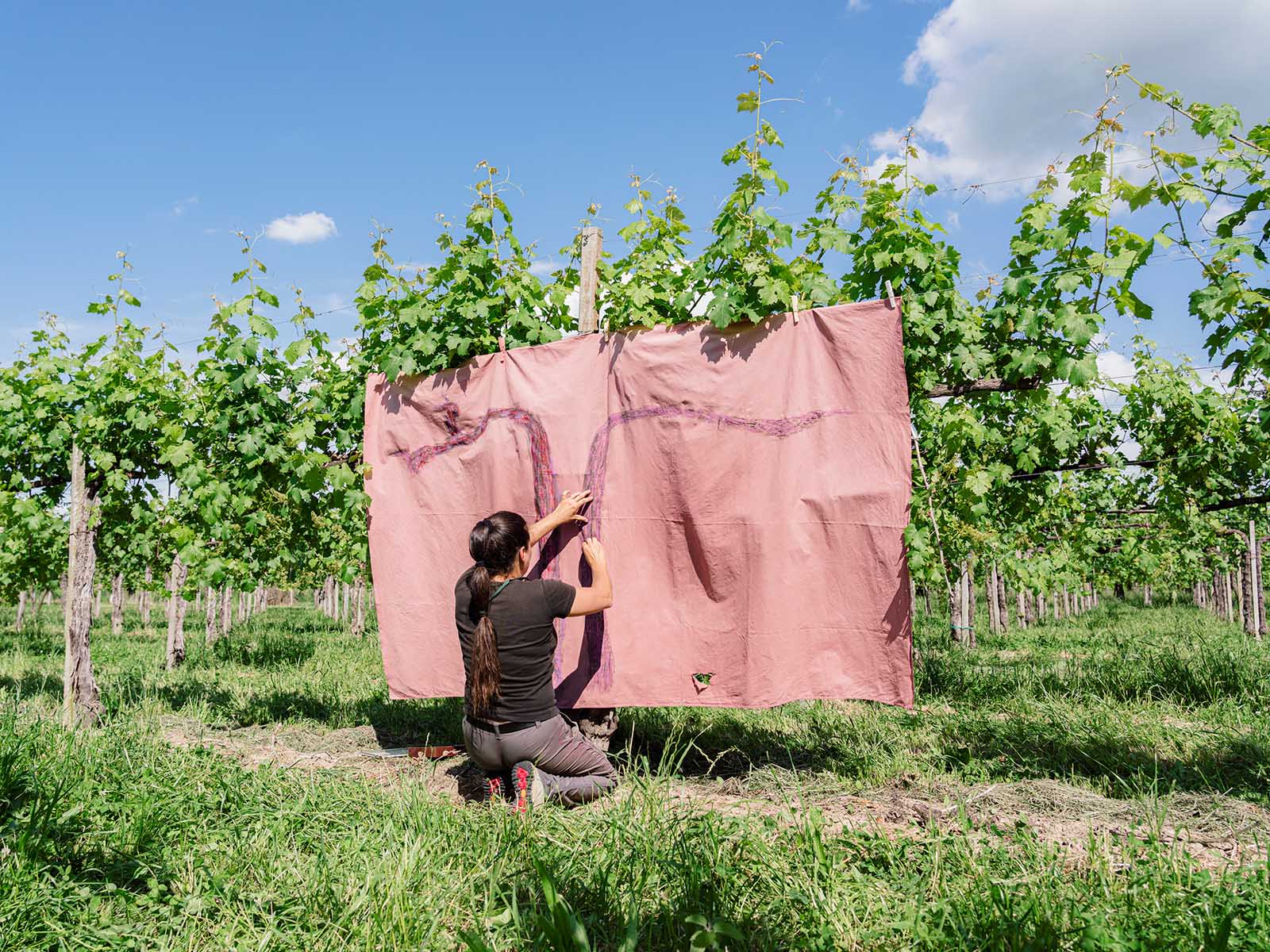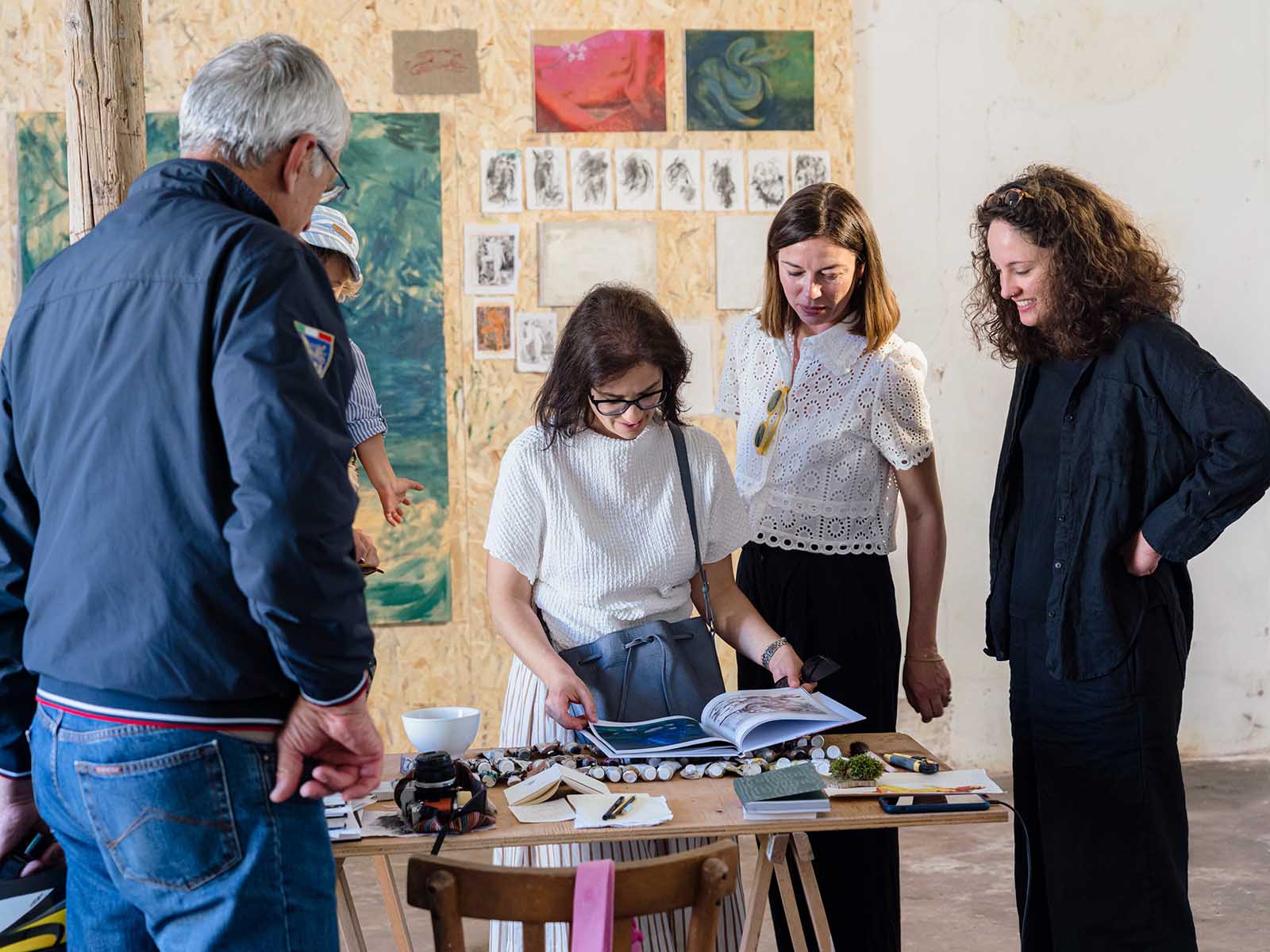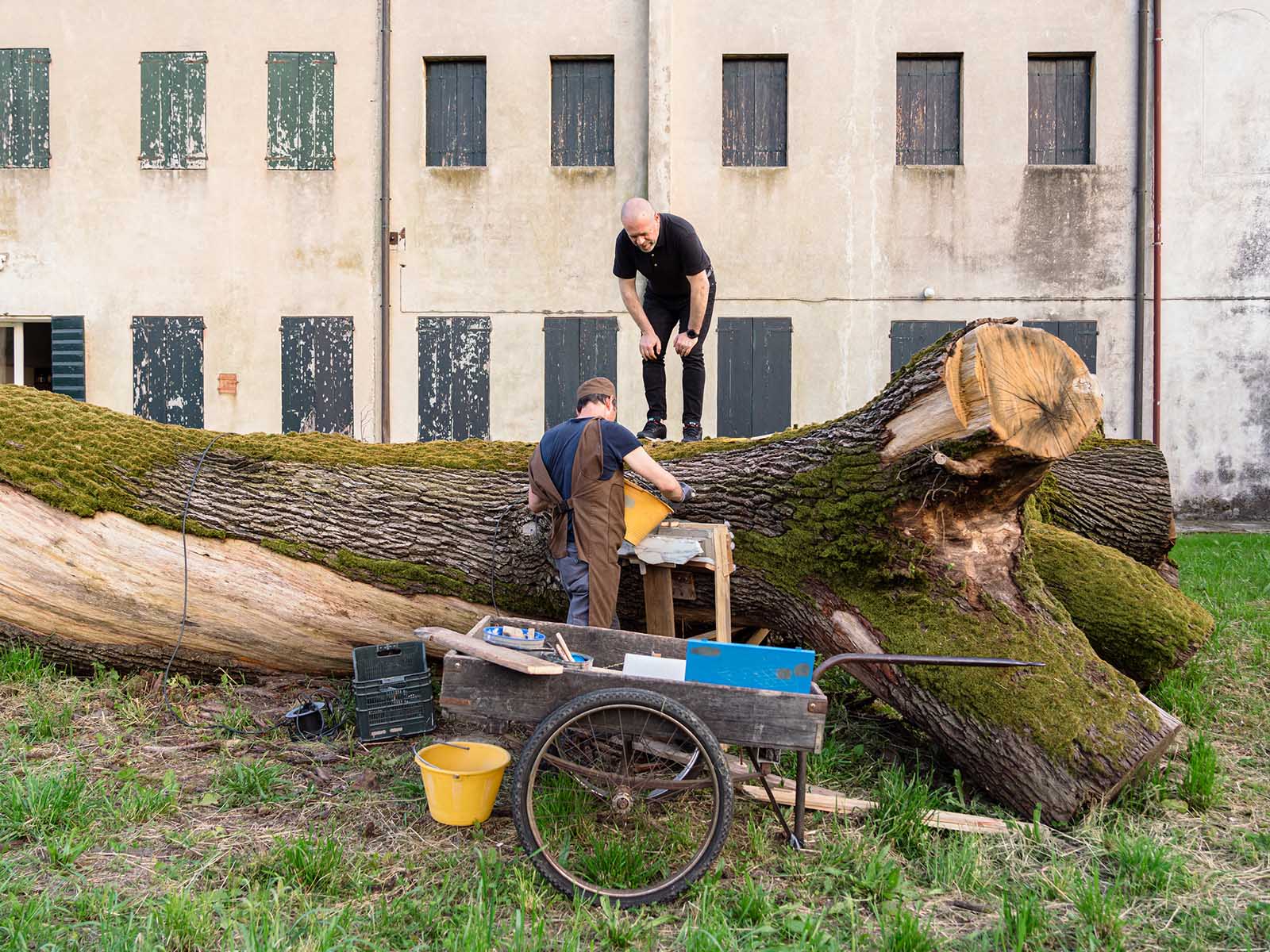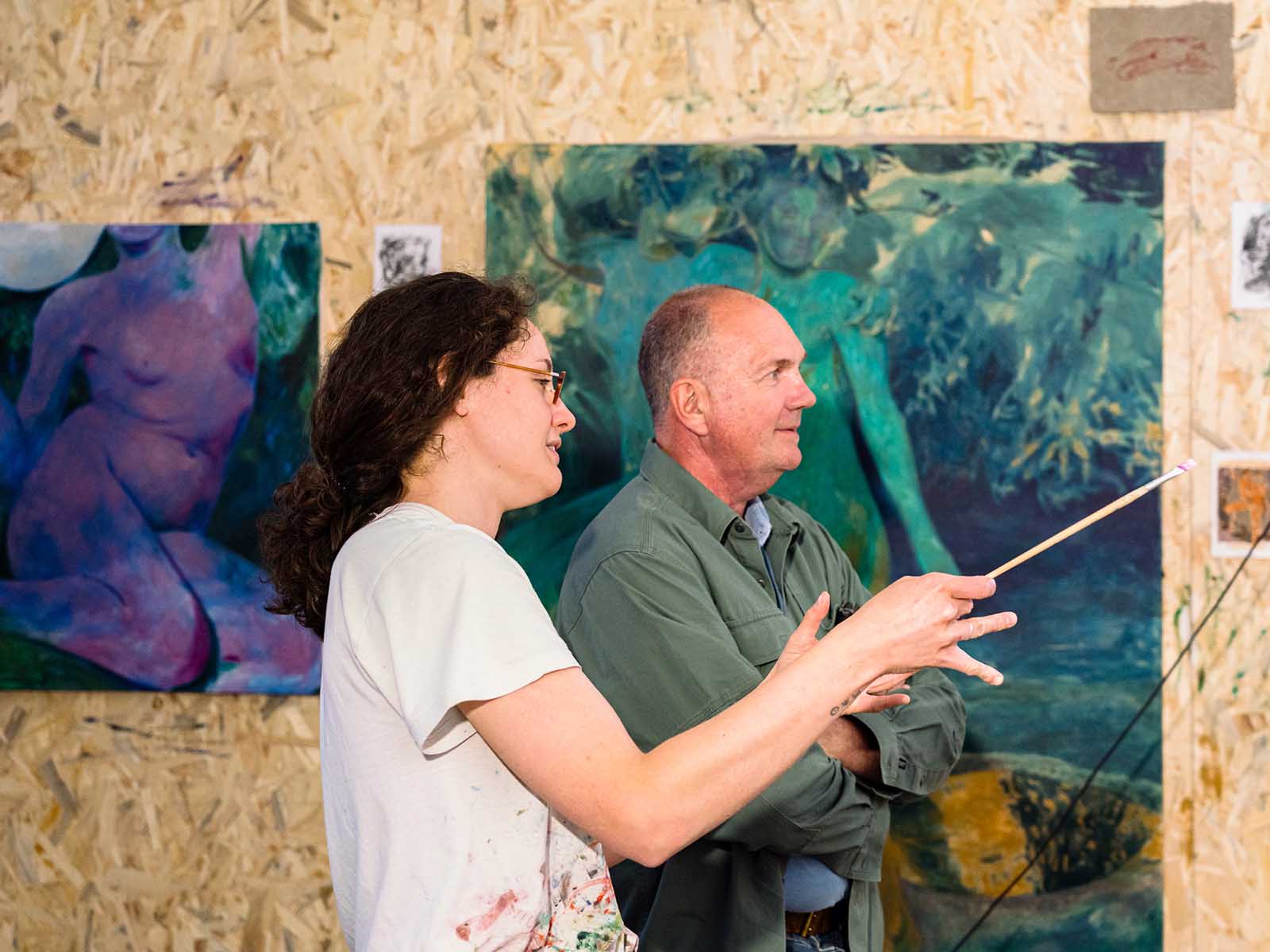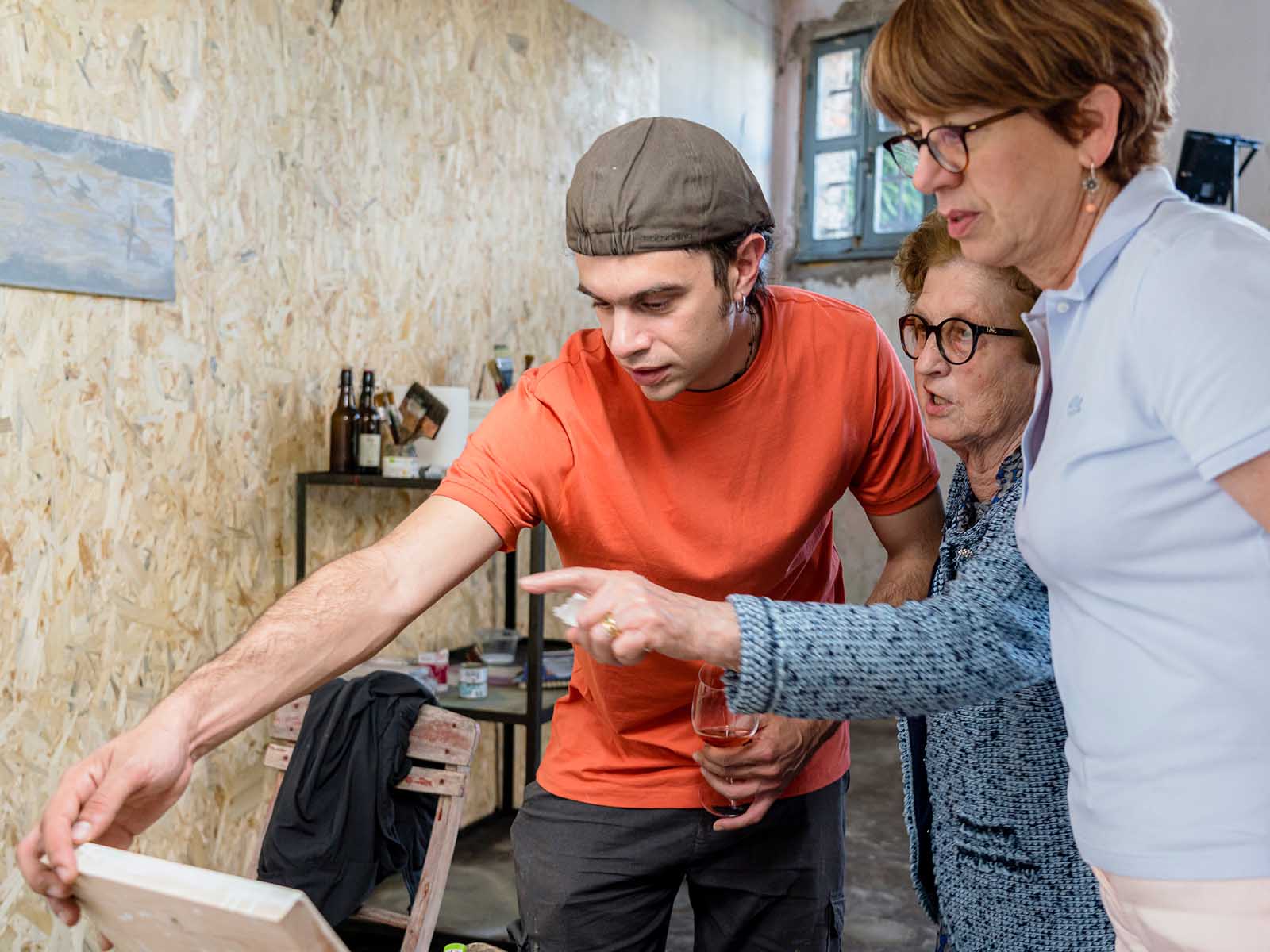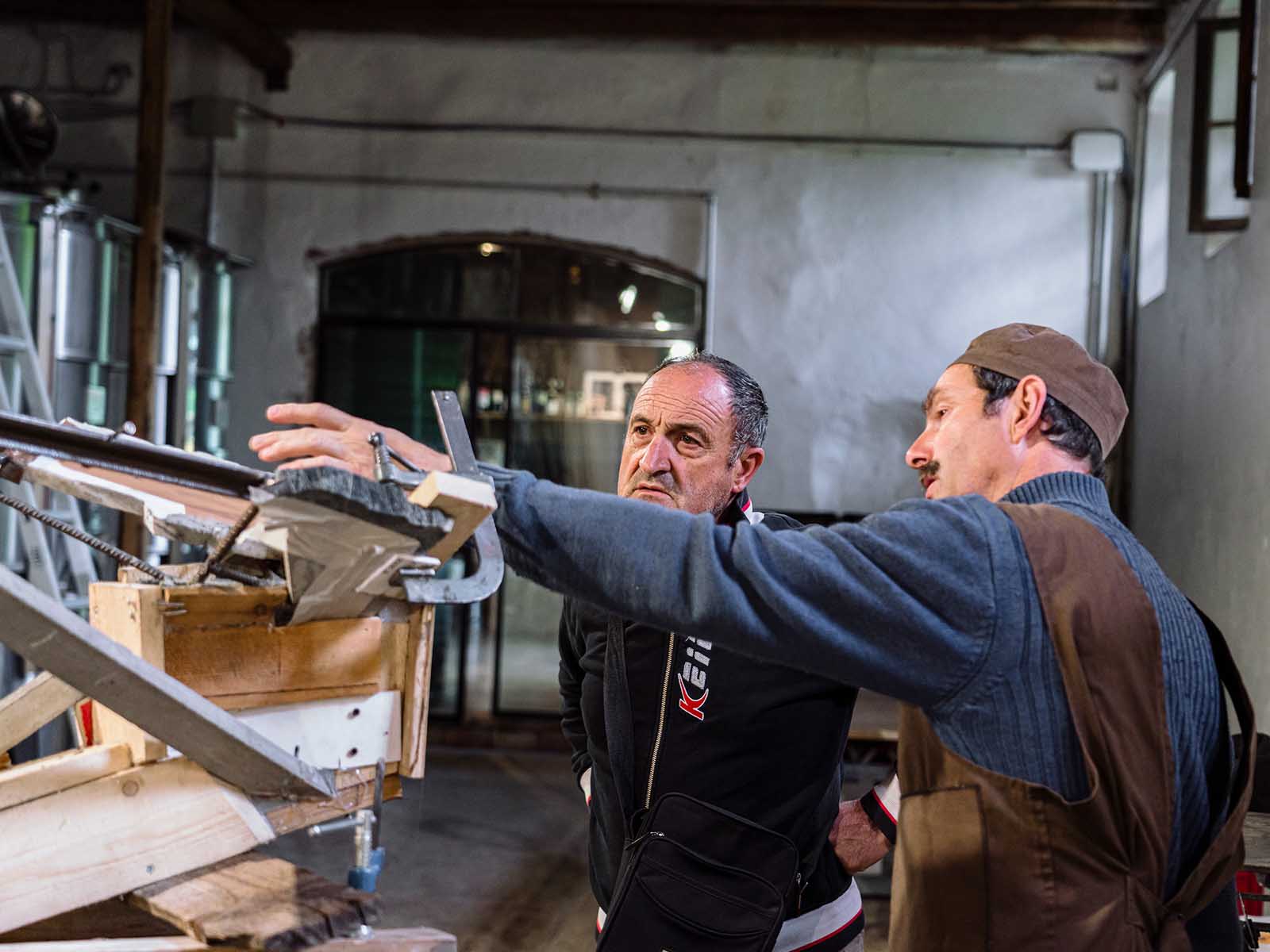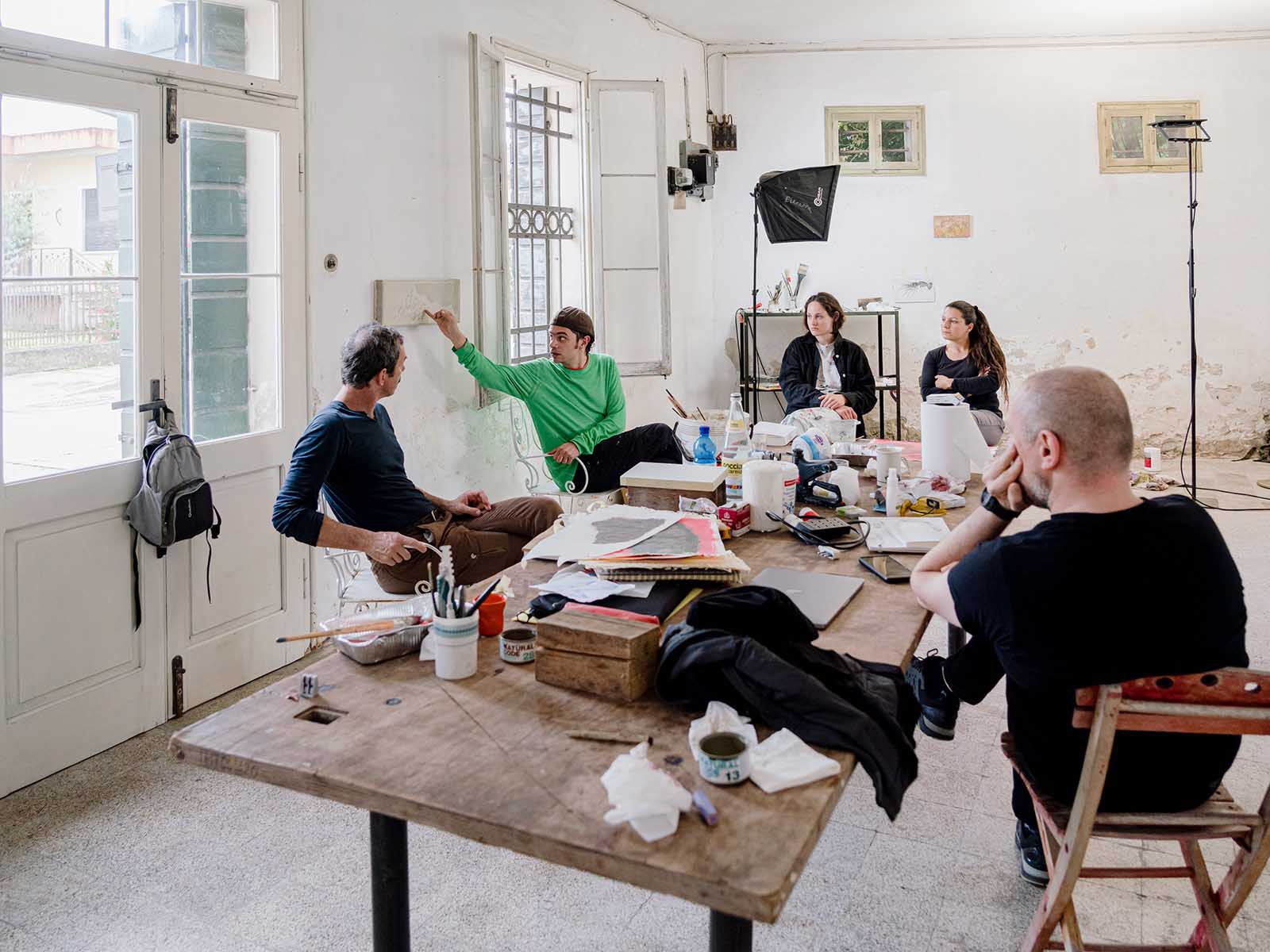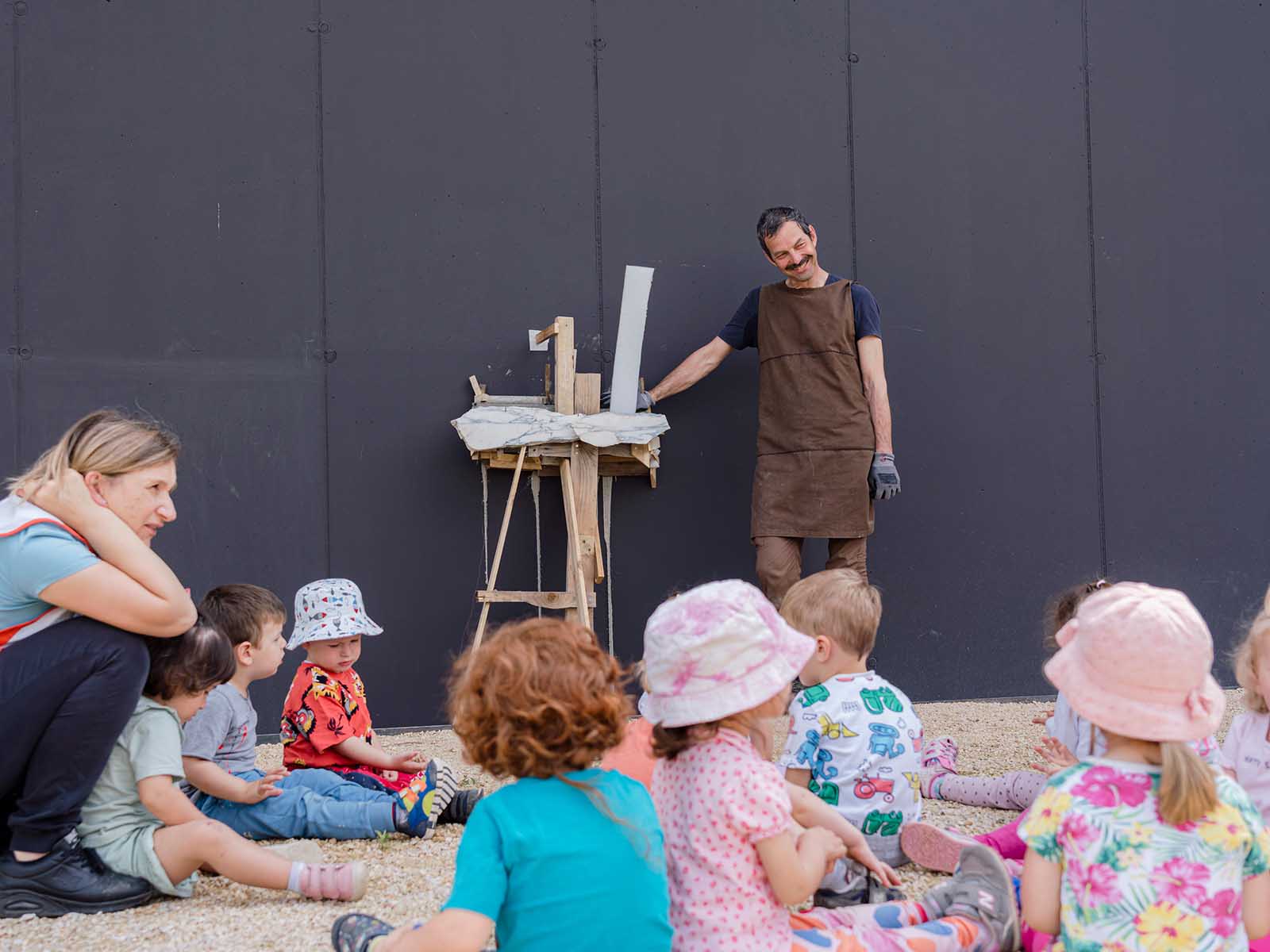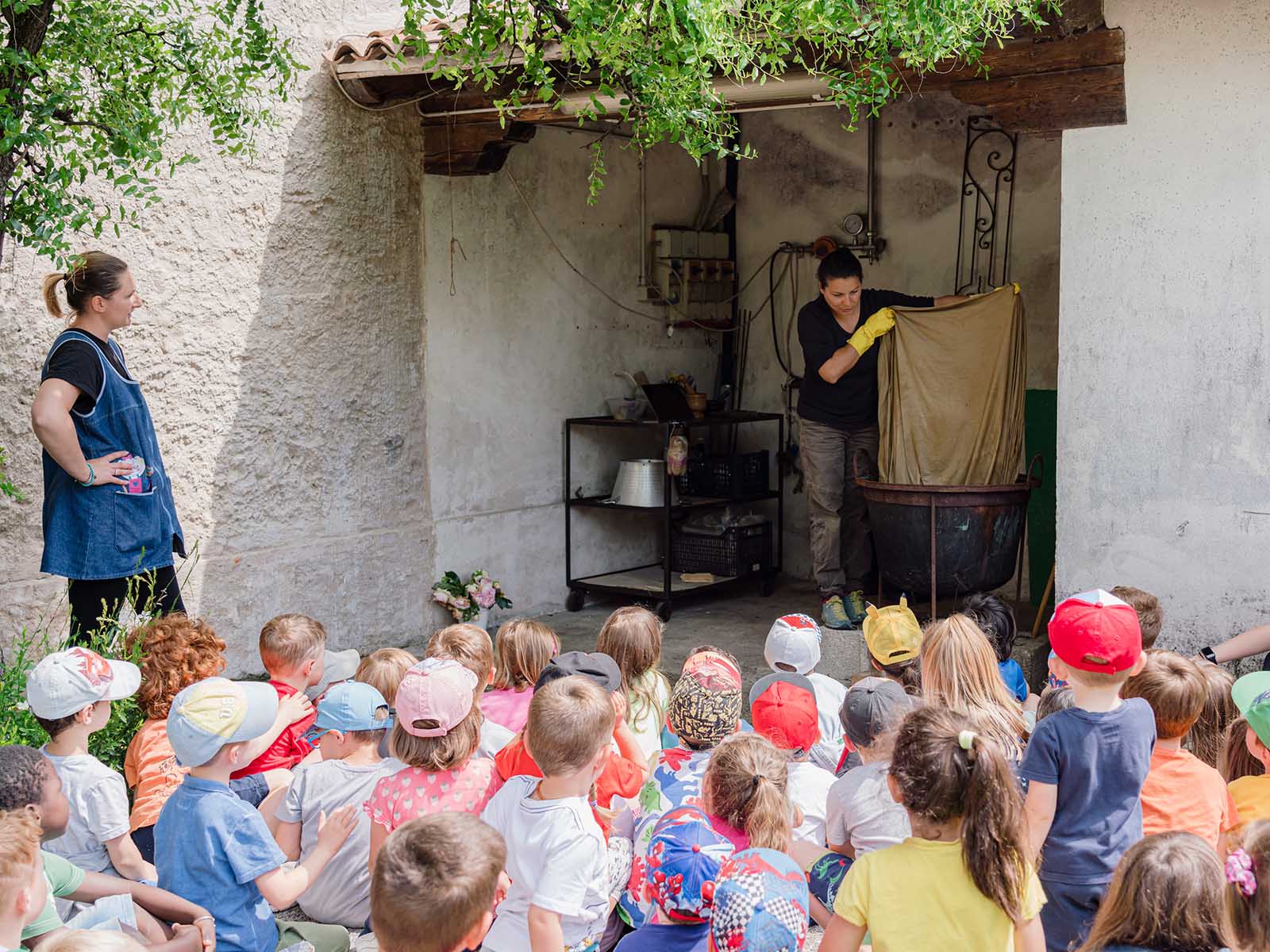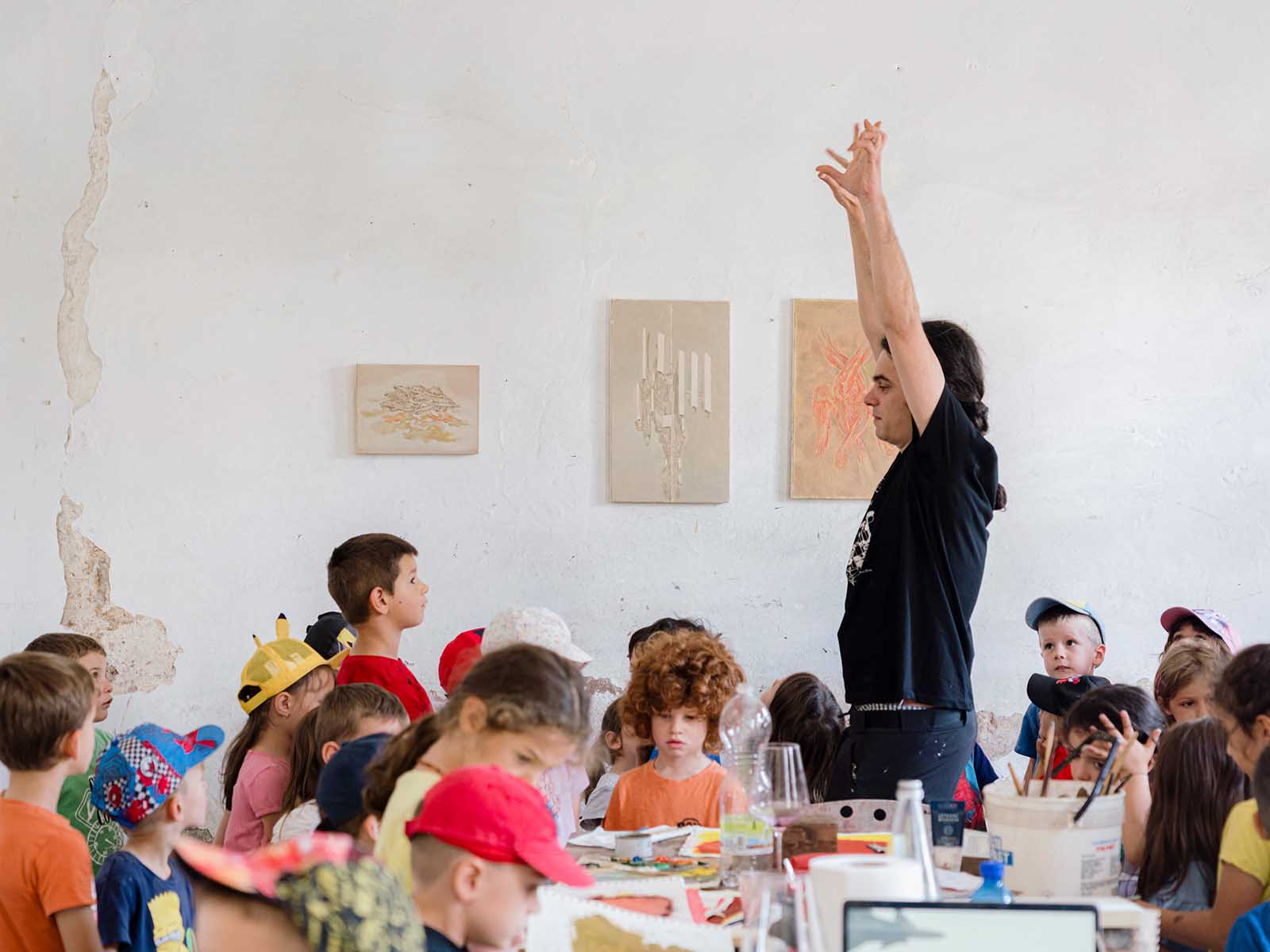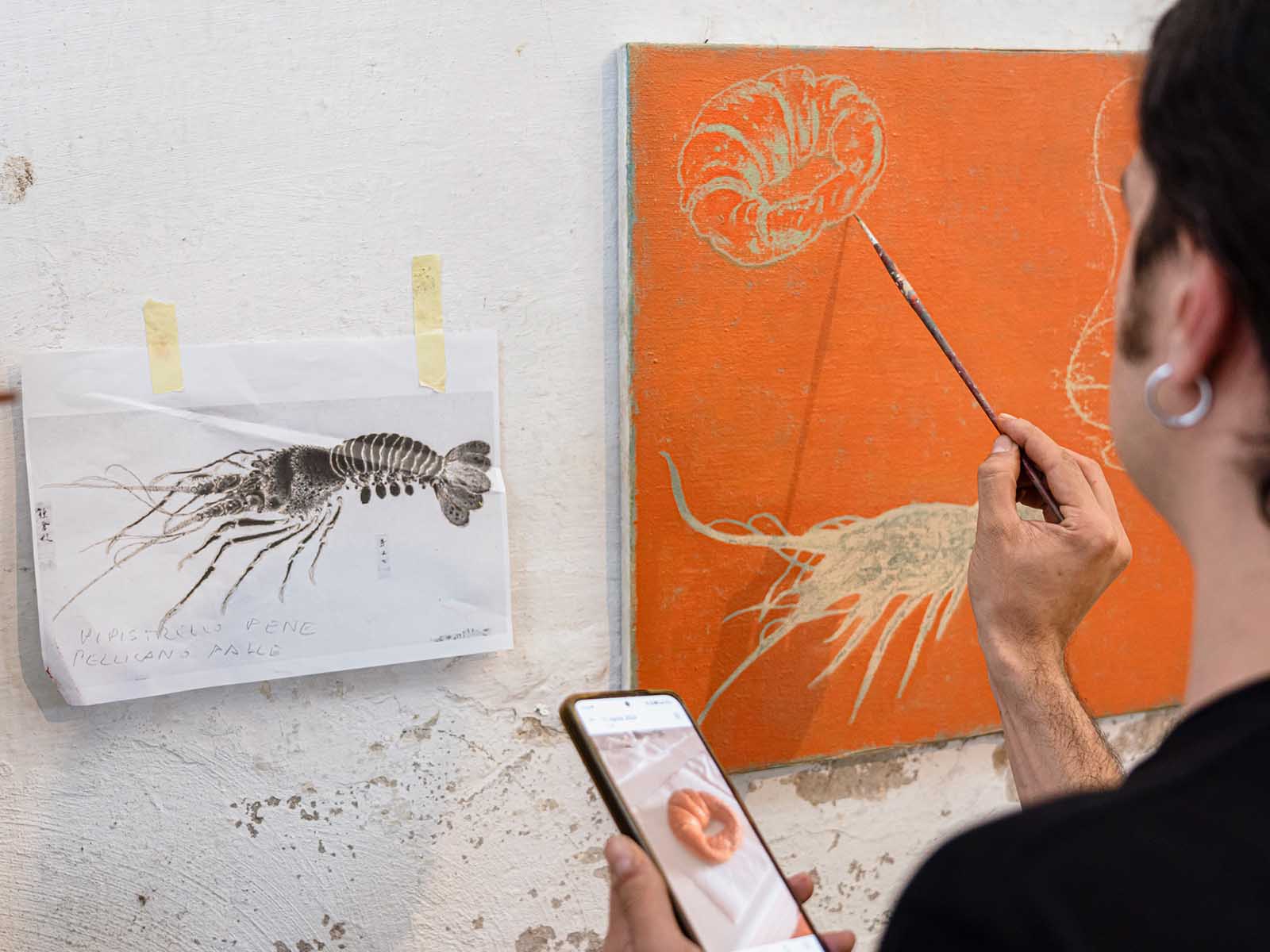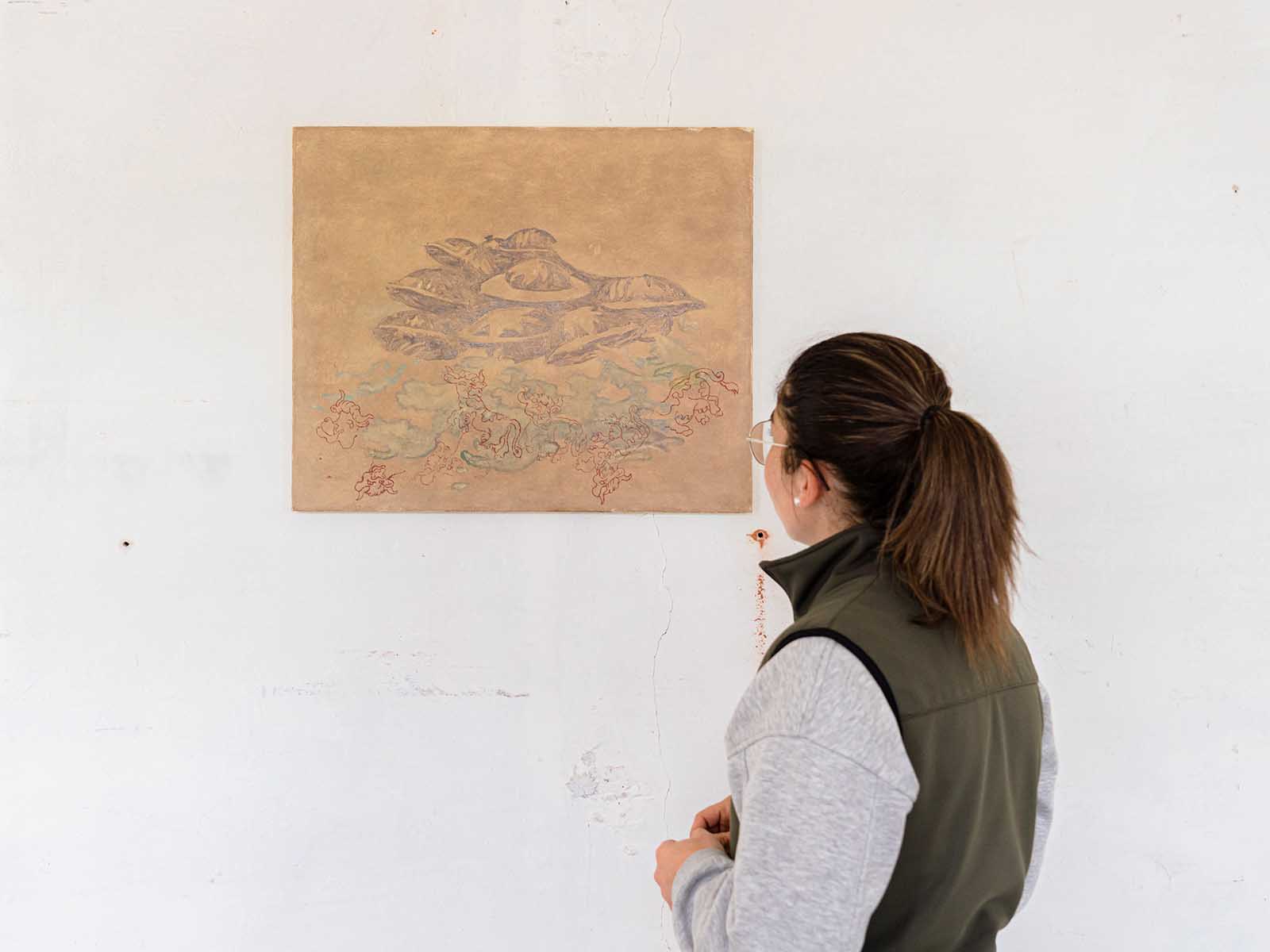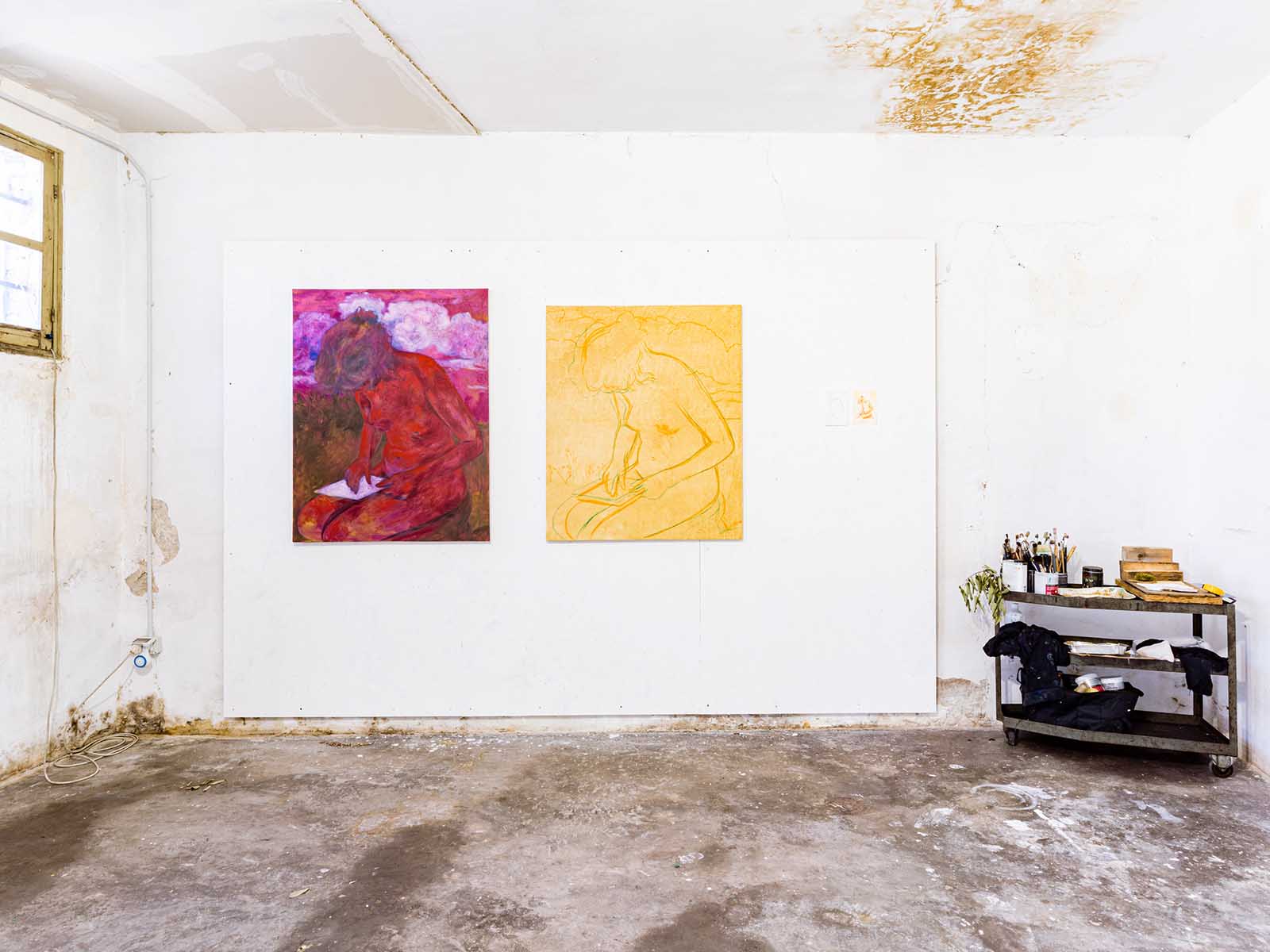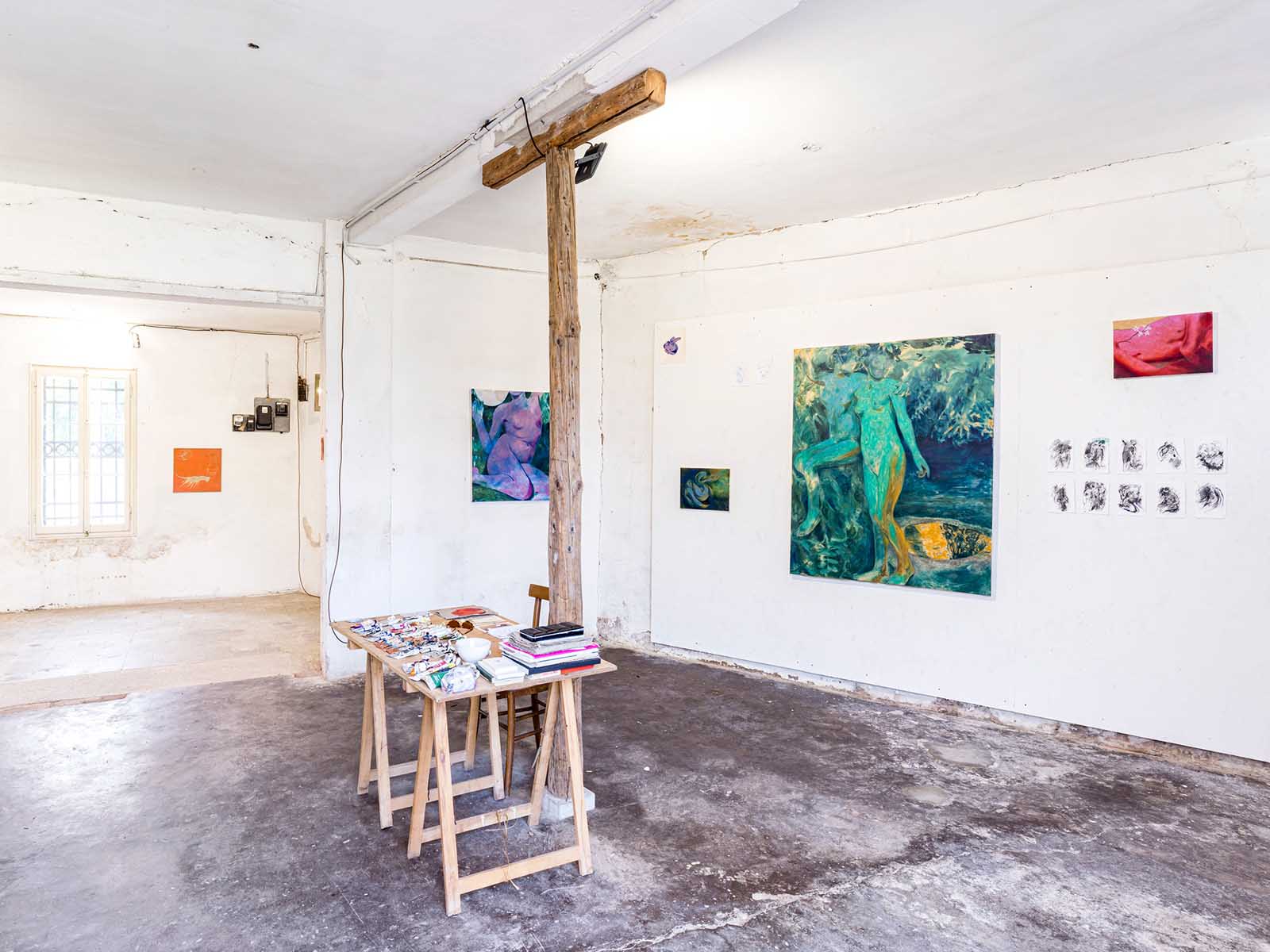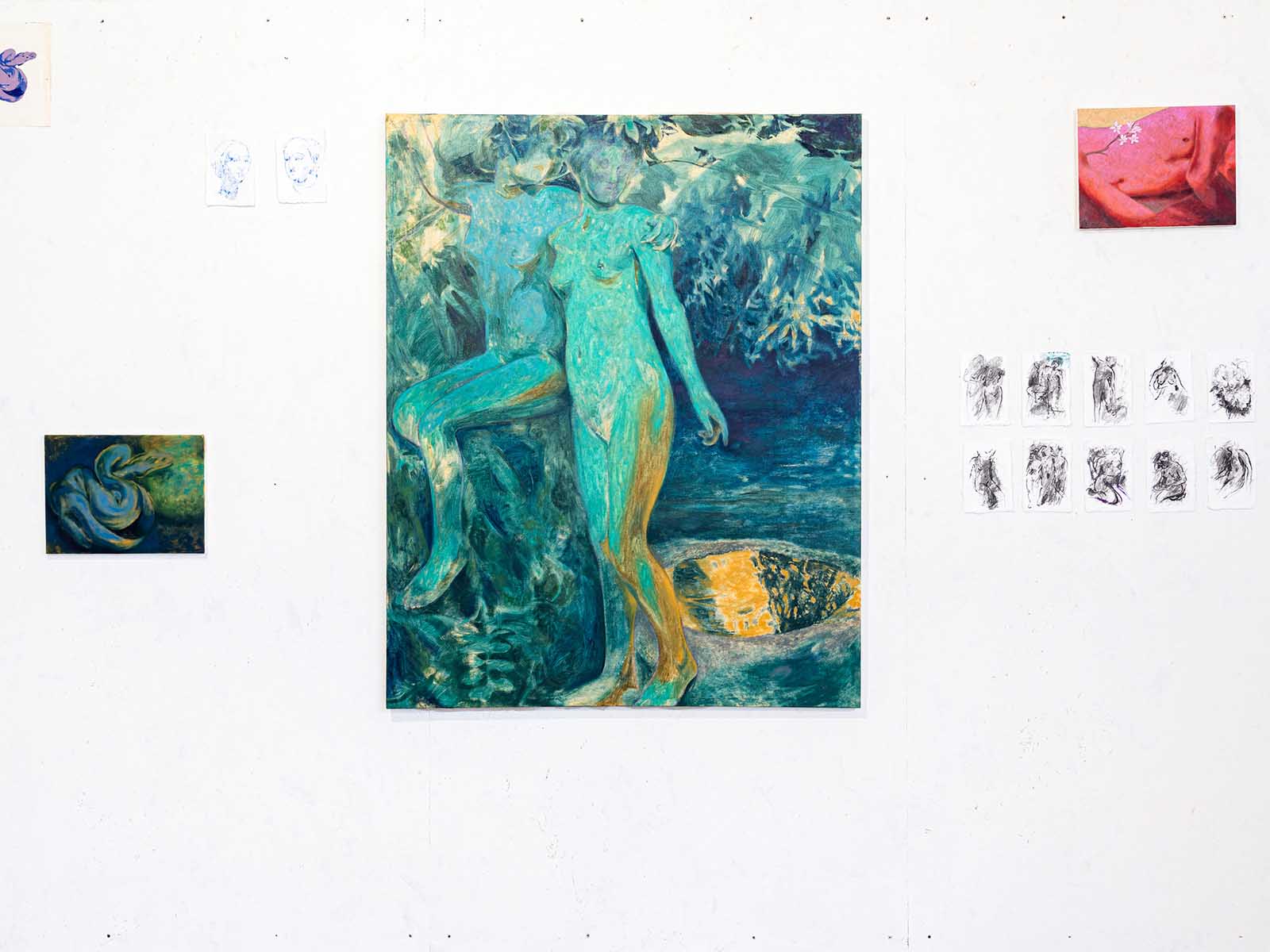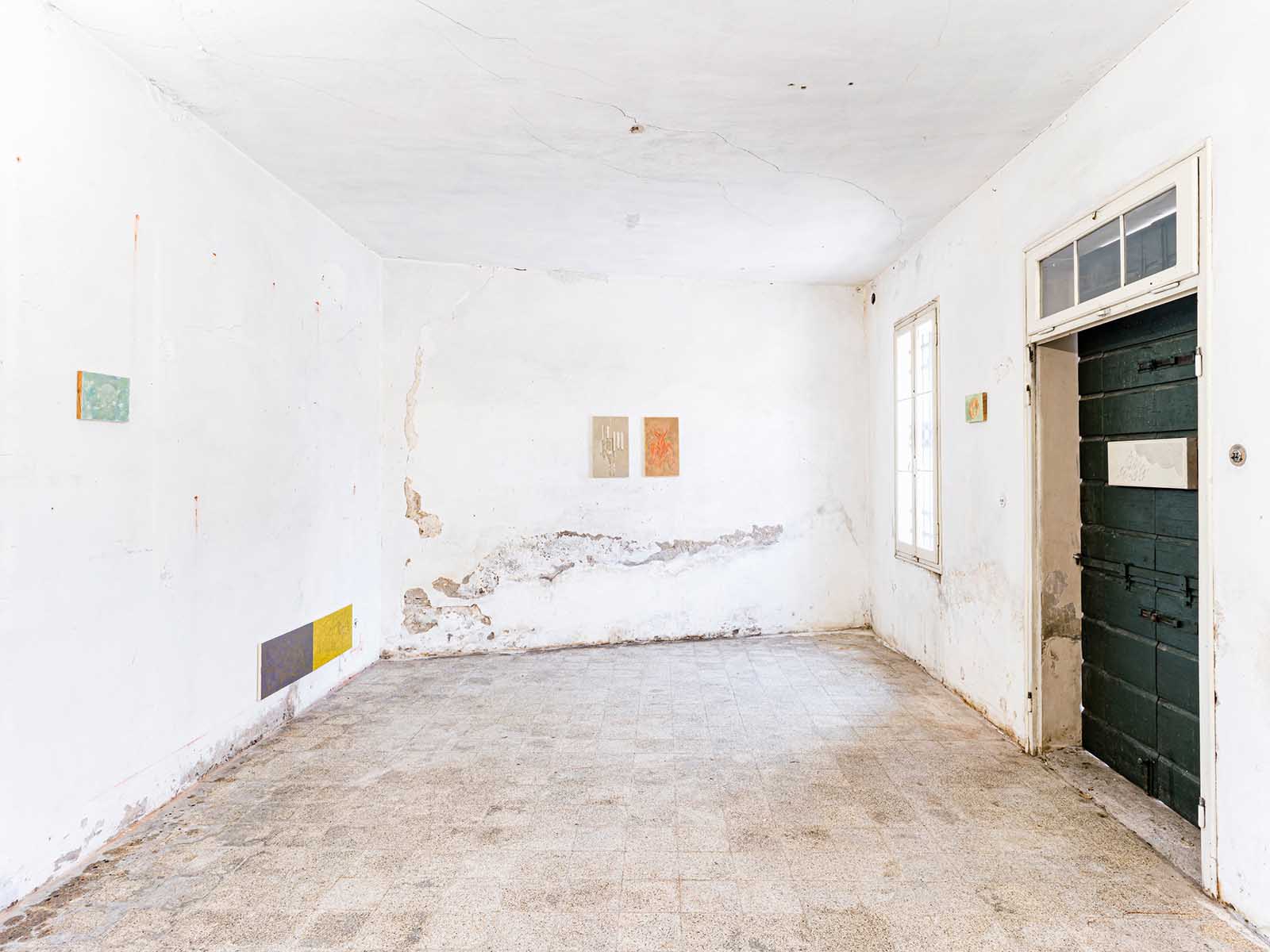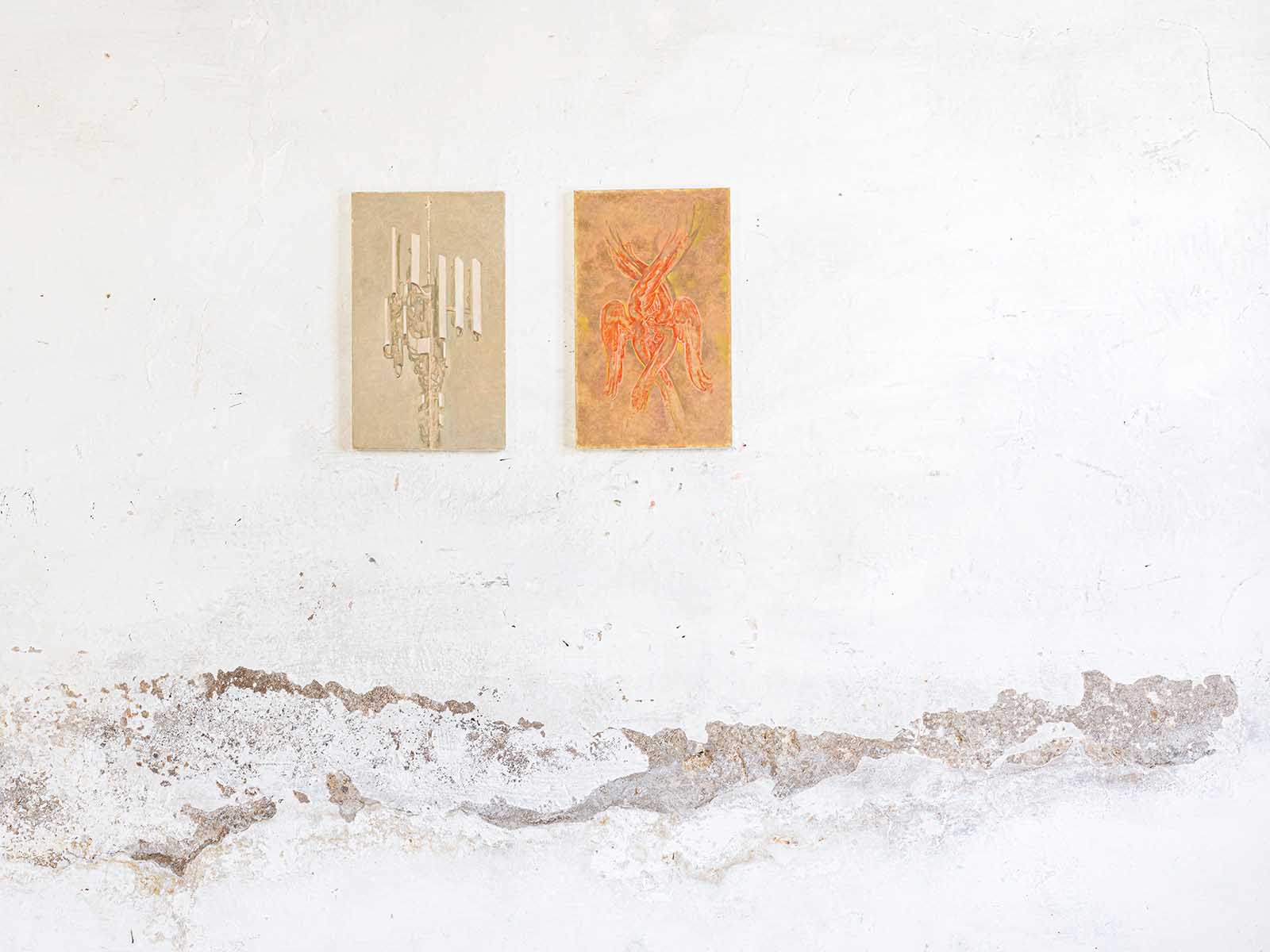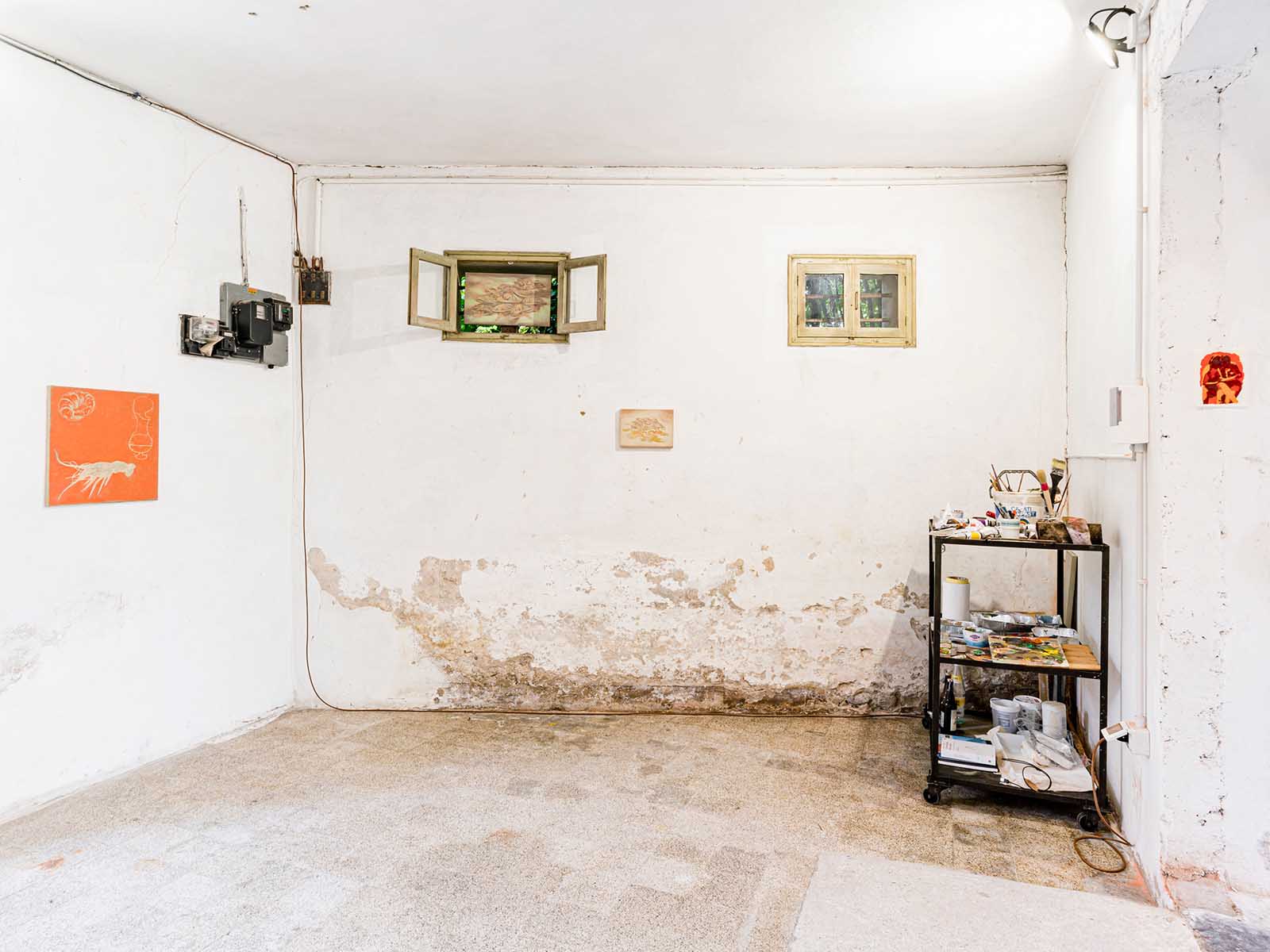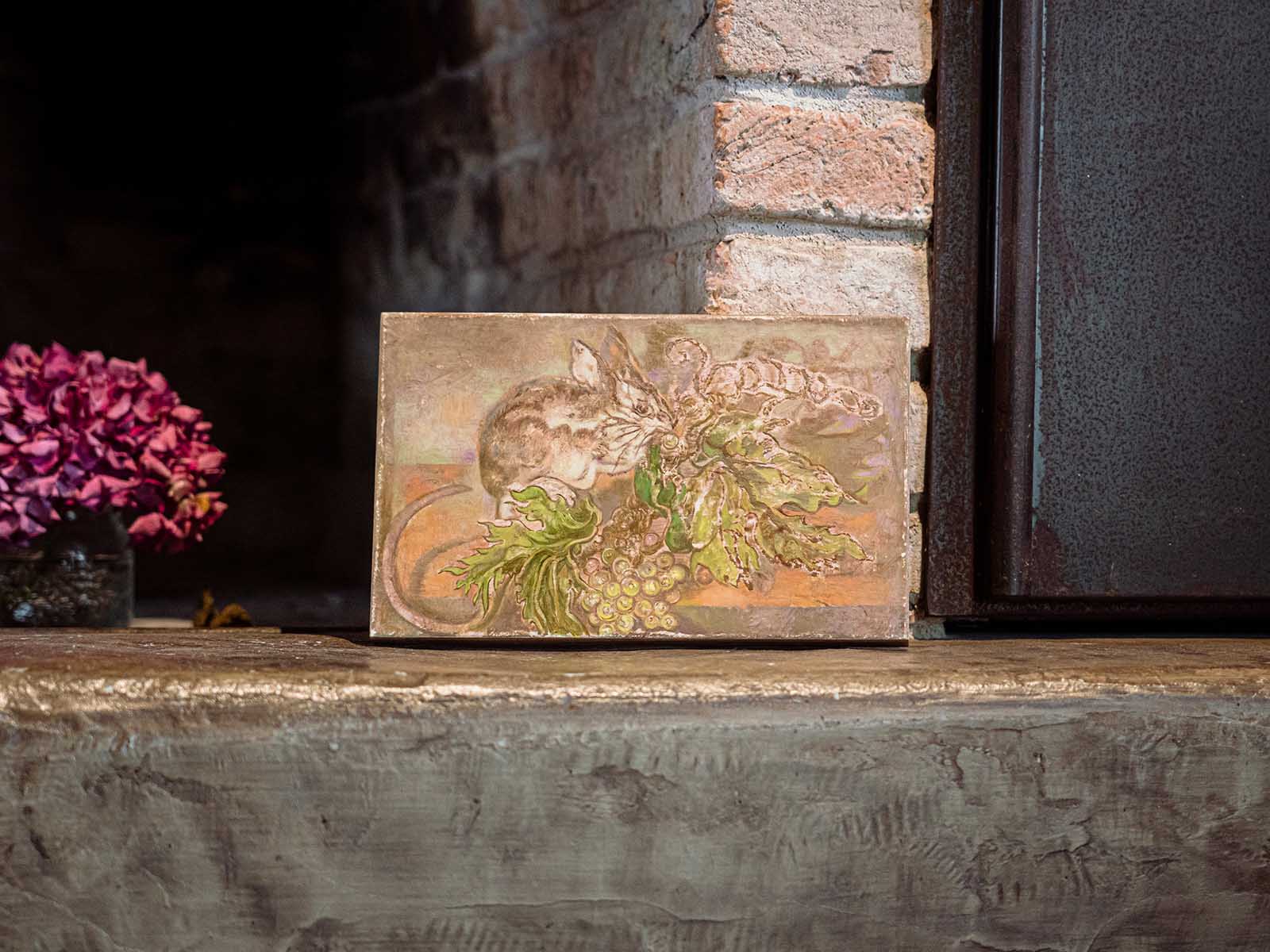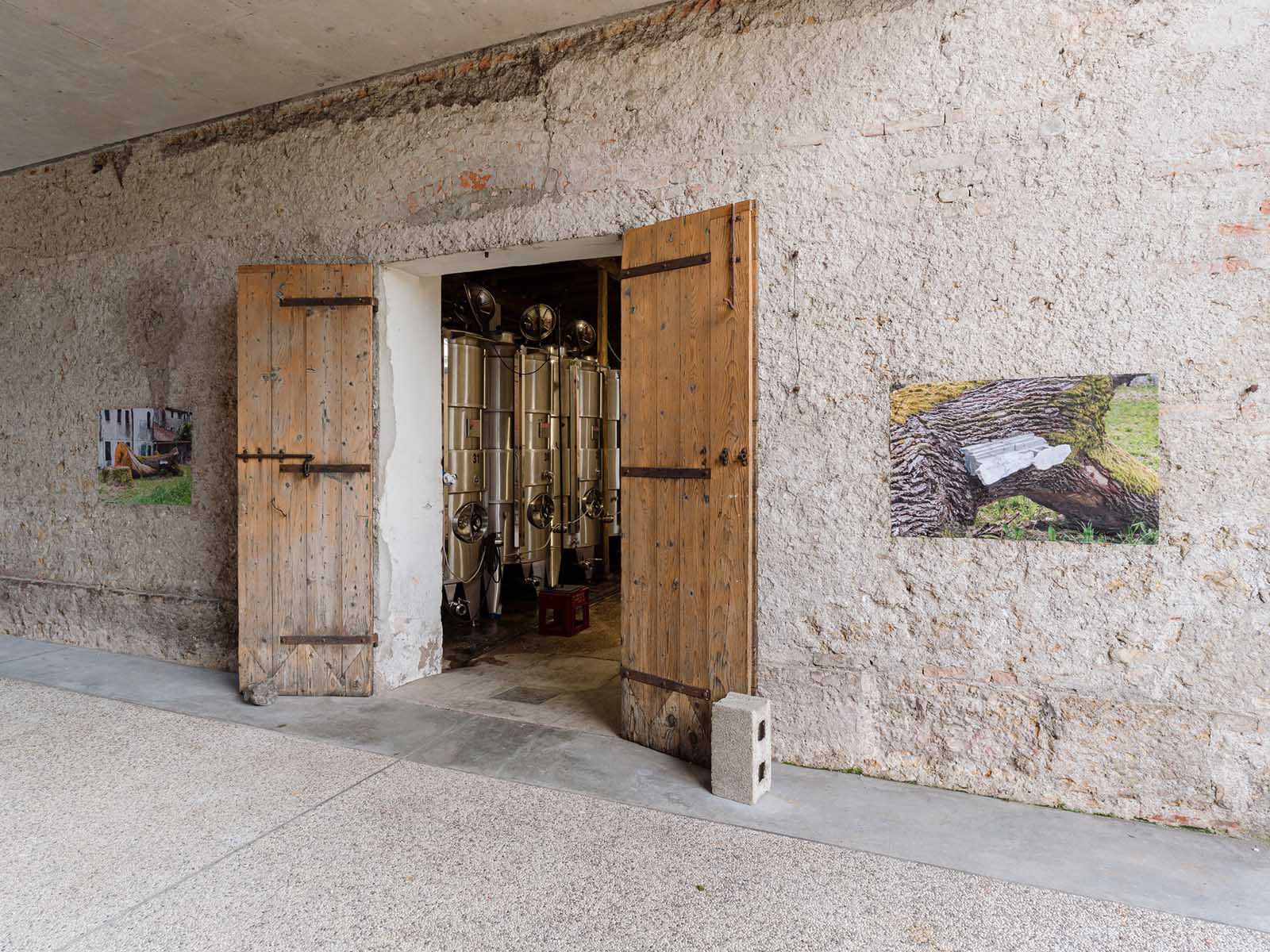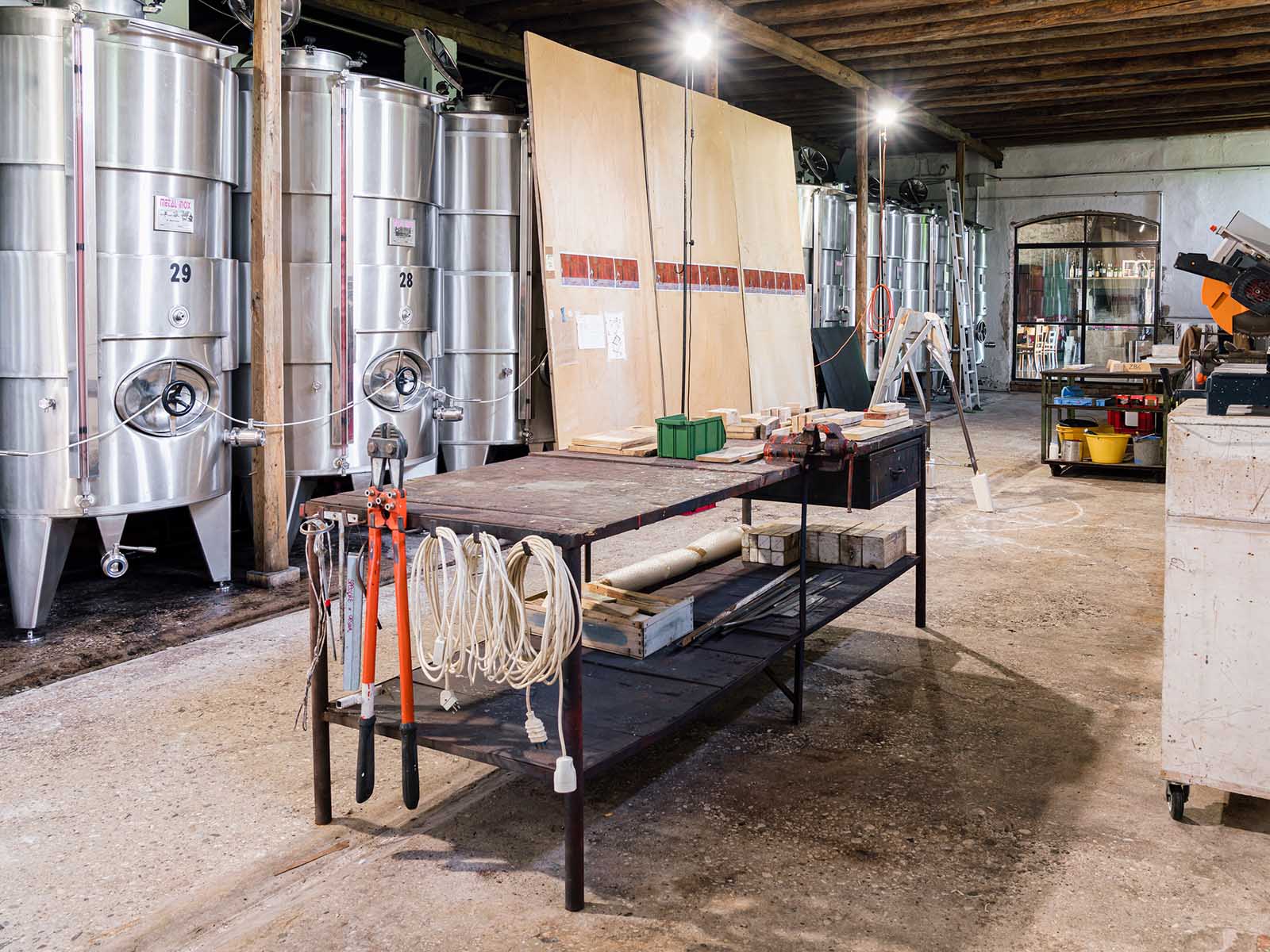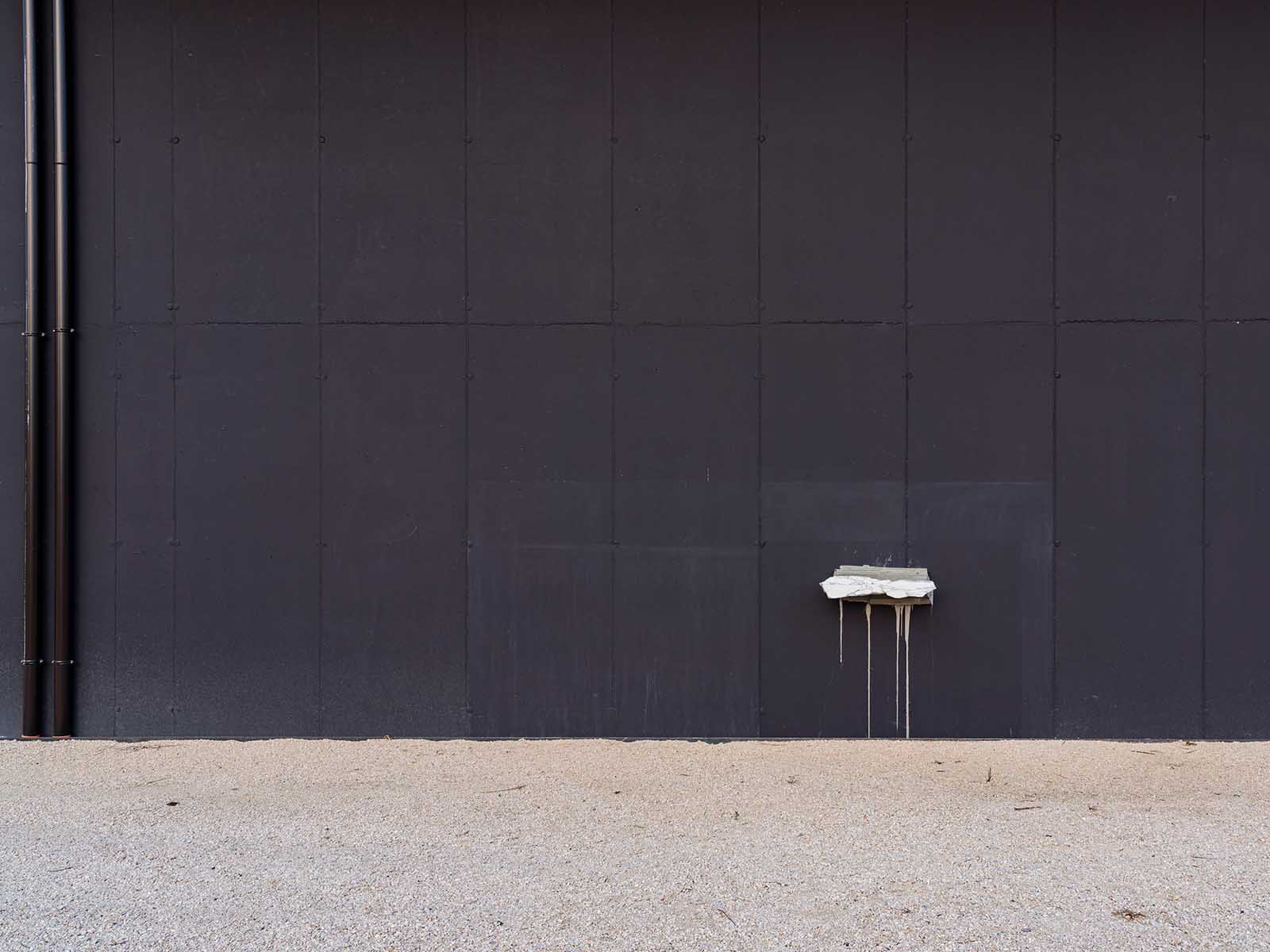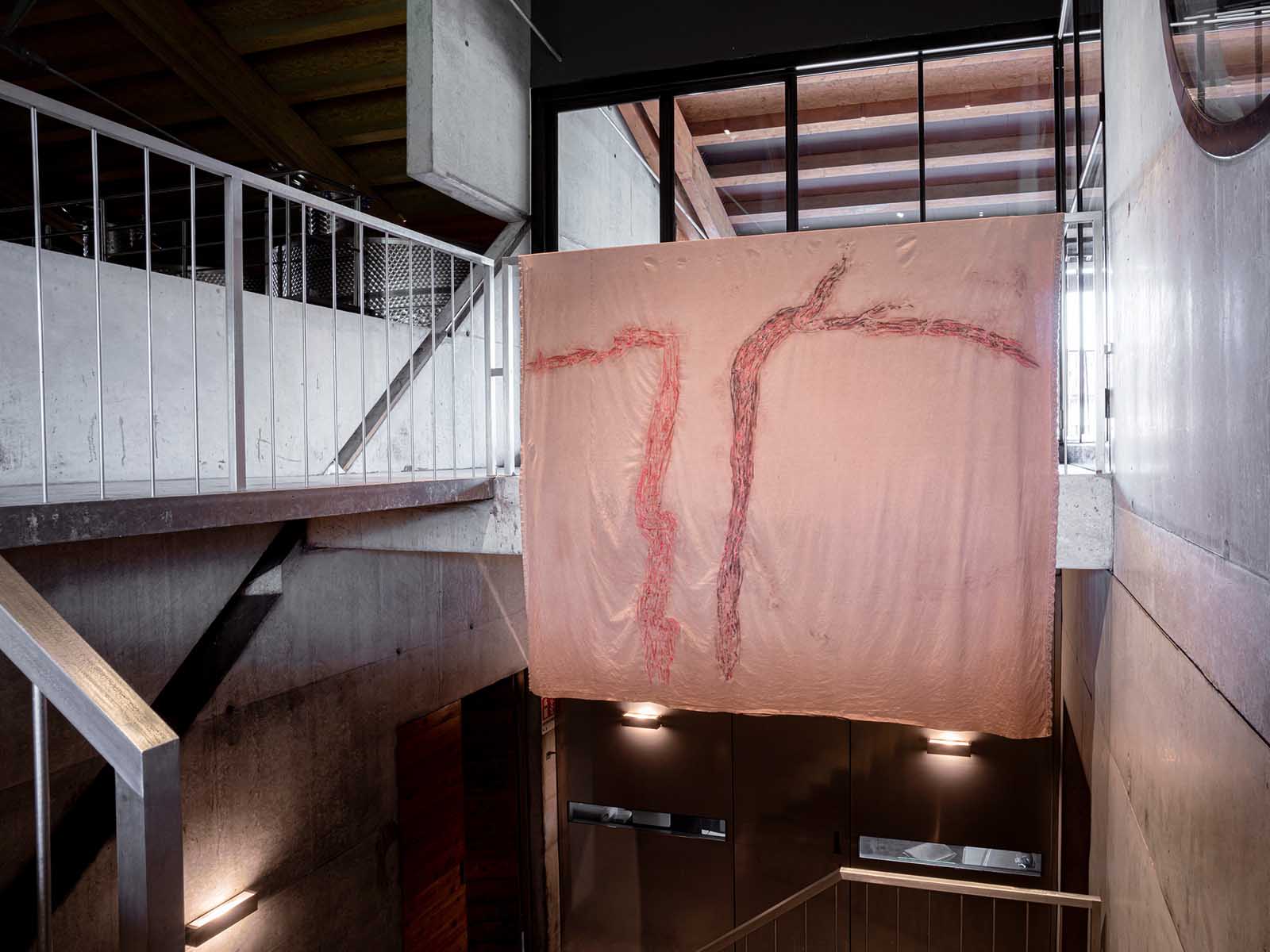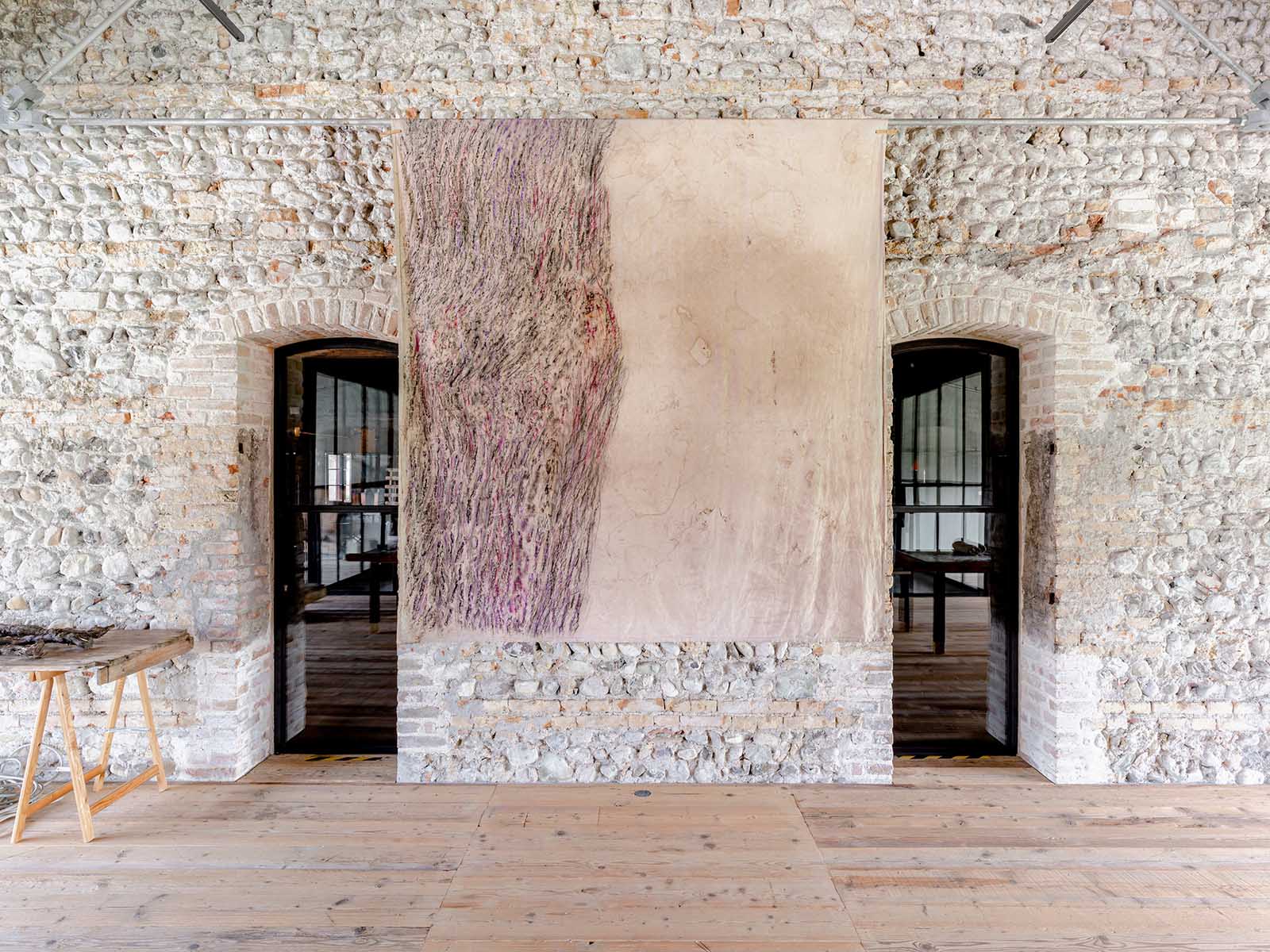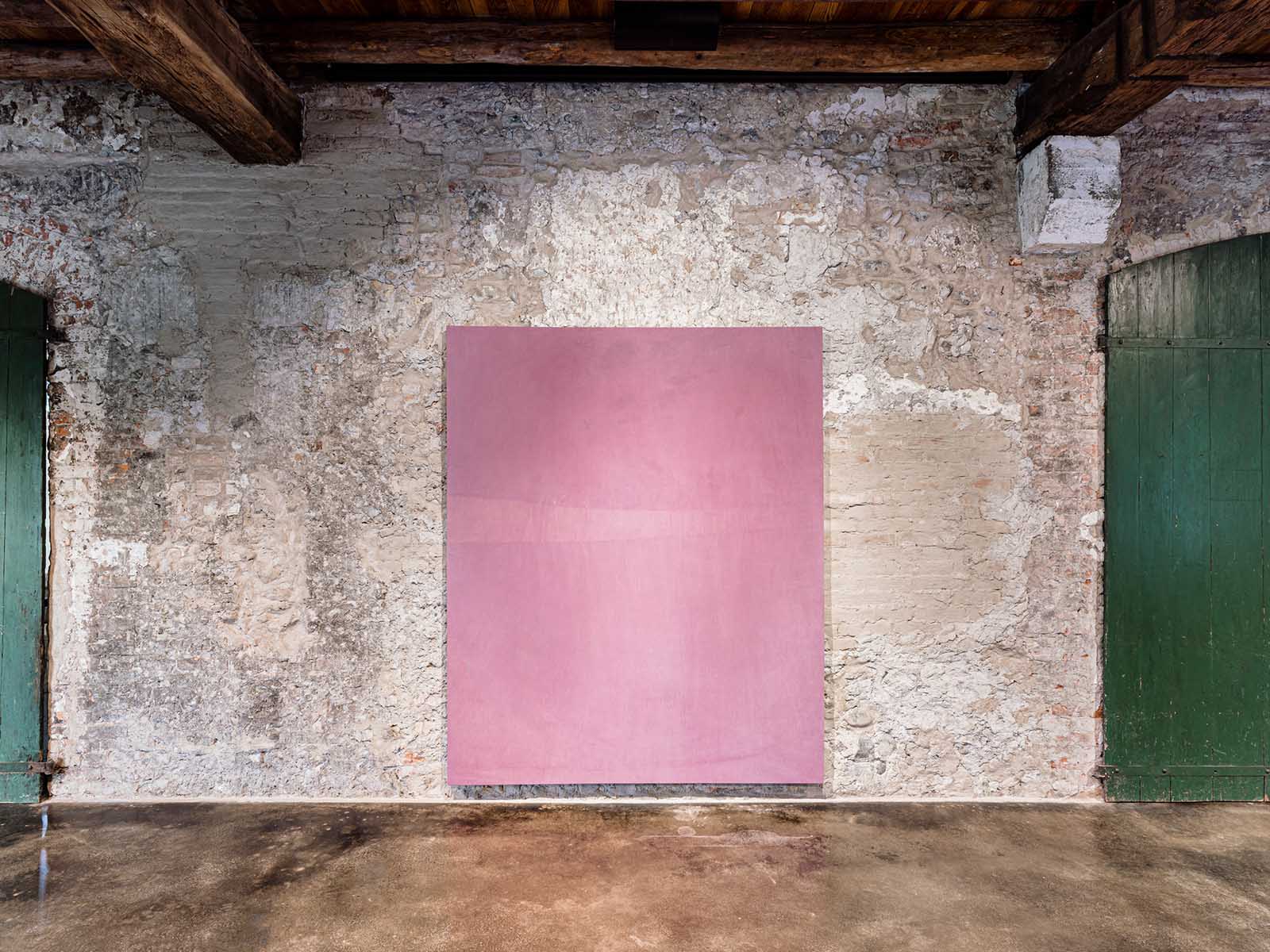Officina Malanotte
Paolo Pretolani, Fabrizio Prevedello, Eleonora Rinaldi, Giorgia Severi
Bonotto Delle Tezze, Vazzola (I)
May — July 2024
Officina Malanotte
Daniele Capra
Officina Malanotte is an artistic residency where Paolo Pretolani, Fabrizio Prevedello, Eleonora Rinaldi, and Giorgia Severi worked for three weeks in the estate and facilities of the winemakers Bonotto Delle Tezze. The project is a laboratory created to combine the logic of the territory, culture, and the world of wine with the capabilities of experimentation and contamination inherent in contemporary artistic language. Officina Malanotte is indeed an experience of art and coexistence aimed at transcending the physical boundaries of the estate in dialogue with the places, the Bonotto family, and the community of Tezze di Piave (in Veneto region). At the end of this journey, an exhibition was held where the works created by the artists were scattered in various areas surrounding the central courtyard of the estate and in the company’s workspaces.
Paolo Pretolani’s painting is characterized by a fascination with the animal world, which the artist highlights with a strong surreal charge — the variety, the irrepressible vitality, the surprising oddities, and the intense erotic tension. His paintings are distinguished by the coexistence of linear drawing and forms defined by colours in delicate, lyrical, and airy tones, often distributed indirectly on the canvas surface using monotype prints. The sky and what happens in the air – above our heads and away from our eyes – were the starting points of the works created in residence. In his canvases, natural subjects like birds alternate with anthropogenic artifacts, such as telecommunication antennas and military aircraft, and purely fantastical elements, like ironic flying saucers that seem to pile up in the air like turtles playing on the sea sand.
Fabrizio Prevedello’s works freely alternate materials such as marble (often scraps), metal, cement, and plaster. His artistic practice, essentially sculptural in nature, stems from an interest in both the elements of the mountain landscape and the materials and construction methods typical of architecture. His works thus trace both the suggestions of the mountainous environment, forests, and marble quarries, and the anthropic forms through which humans build, arrange, and modify space. His works are often additive constructions, aggregates in which materials are combined in a planned manner, based on their technical characteristics and visual significance. Untitled (286) is a tripod sculpture with plaster feet, which tilts on its legs when moved, leaving a mark on the floor. It is a three-dimensional work that produces an ephemeral drawing destined to disappear. Untitled (154) is a sculpture that grows in size since each time it is placed in a location, it undergoes an increment due to the quick-setting cement with which it is fixed to the surface. It was placed in three different locations within the company (the courtyard, the oak tree, and finally, a wall of the new building), documenting in its very material the effects of its wandering.
Eleonora Rinaldi’s artistic practice is based on drawing and painting on canvas. Her paintings are characterized by an essential, linear, and velvety figuration, distinguished by synthetic and anti-descriptive forms. In her works, marked by a strong chromatic verve, colours are often combined in a contrasting, unnatural, and anarchic manner, with free and visceral modes reminiscent of the subversive painting practised by the Fauves. This anti-naturalistic tension contributes to creating a strong magical charge and a metaphysical atmosphere of vaporous suspension in her works. The human figure and animals in the landscape are the recurring subjects of her paintings, in which the bodies are in a free state of nudity and emotional coherence with the natural context in which they are immersed. The works created in residence are characterized by the presence of the double, both in the form of two people in close relation and a girl scrutinizing and looking at herself in the mirror, presented in two versions: the first as a drawing on painted canvas, the second as an oil painting, both immersed in a sense of intriguing mystery.
Giorgia Severi’s artistic practice stems from an interest in the environment, the landscape, and the relationships between nature and human presence, which she explores in an interdisciplinary manner through sculpture, installation, frottage, painting, and video. Climate and ecological changes due to human impact, species extinction, and the loss of biodiversity are the themes of her research, in which the artist often acts first-hand, putting herself in direct relation with the environmental contexts and sociocultural realities of the place. During the residency, the artist dyed several old cotton sheets, provided by the families of Tezze, with colours extracted from landscape elements such as flowers, barks, and wine produced by the Bonotto family. These works represent an unusual synthesis of the place, a distillation that conceptually conveys its geographical and anthropological traits in the anomalous form of a canvas work. Similarly, Severi created frottages by tracing the carménère vine plants and the old oak tree that had to be felled in recent months, bearing witness to a life still ongoing and one that will continue in the family’s memory.
The edition of 2023 and of 2022.
